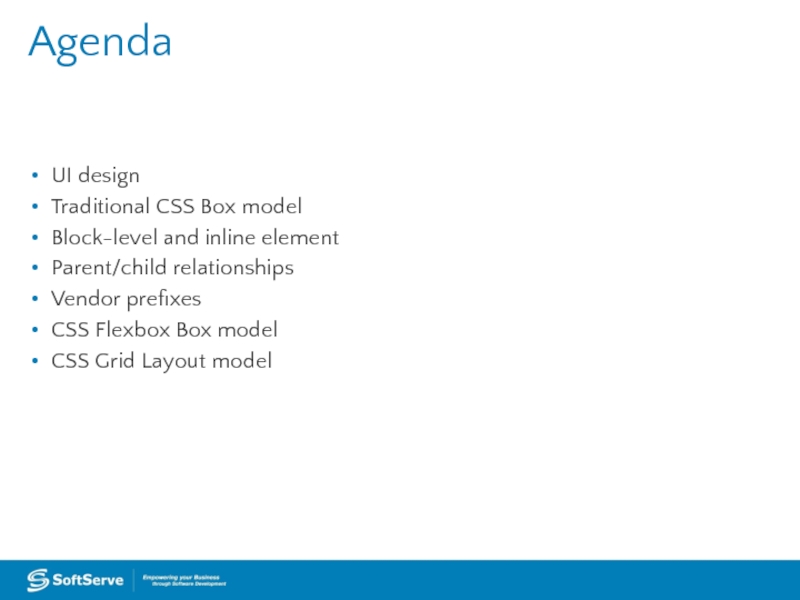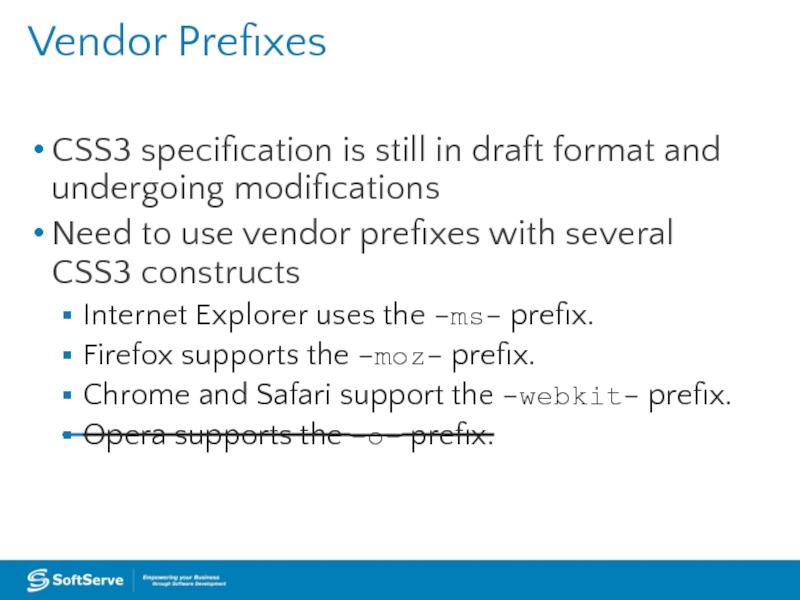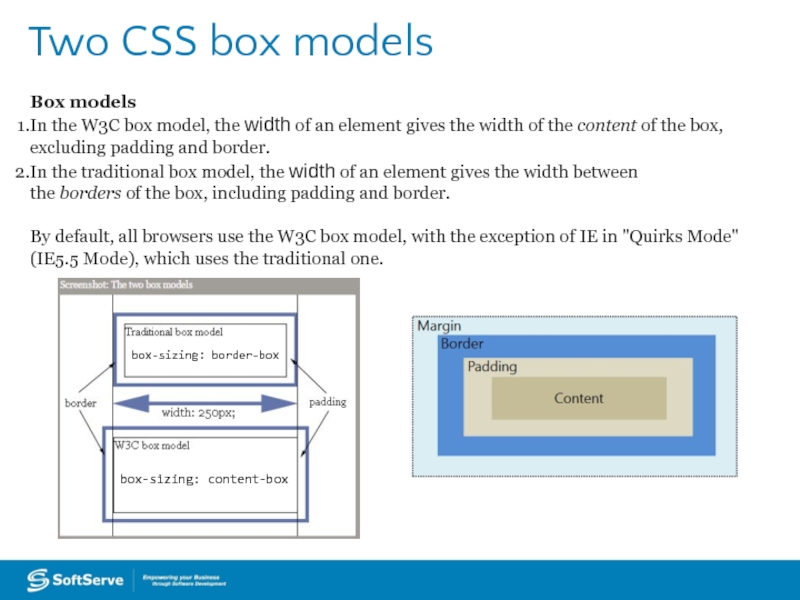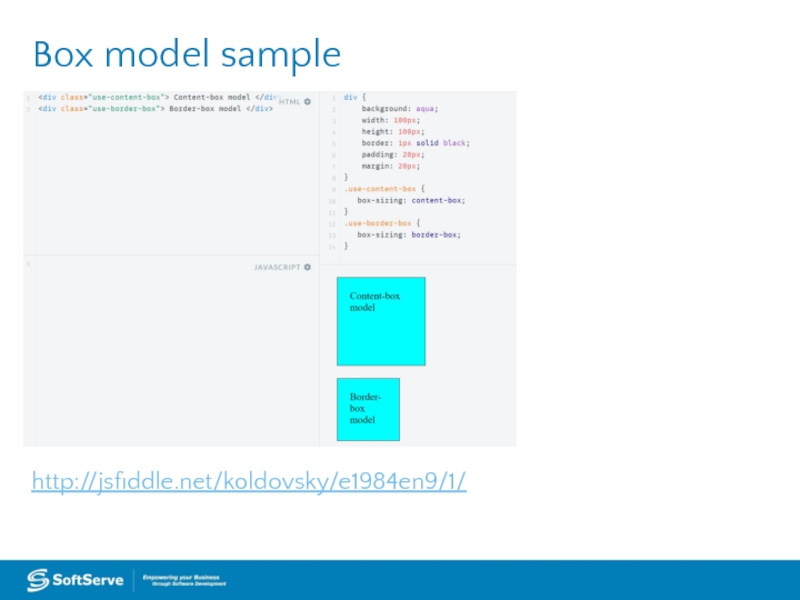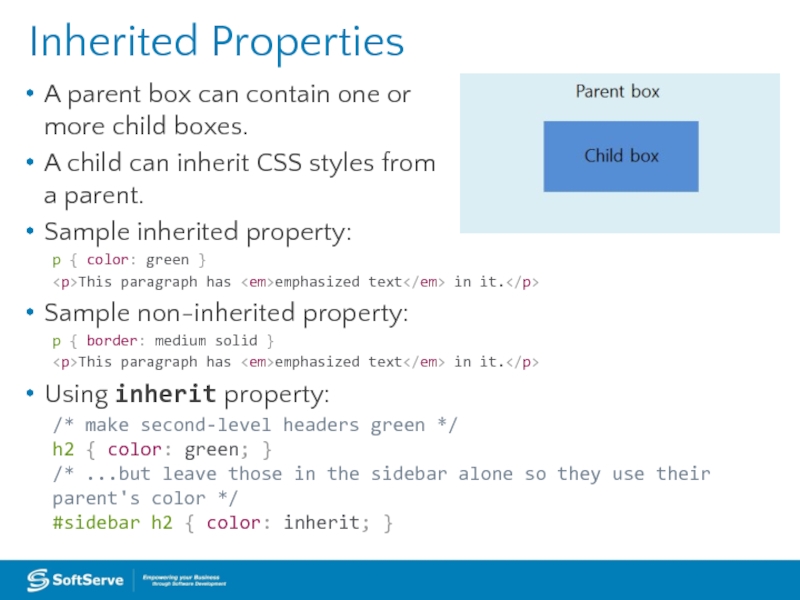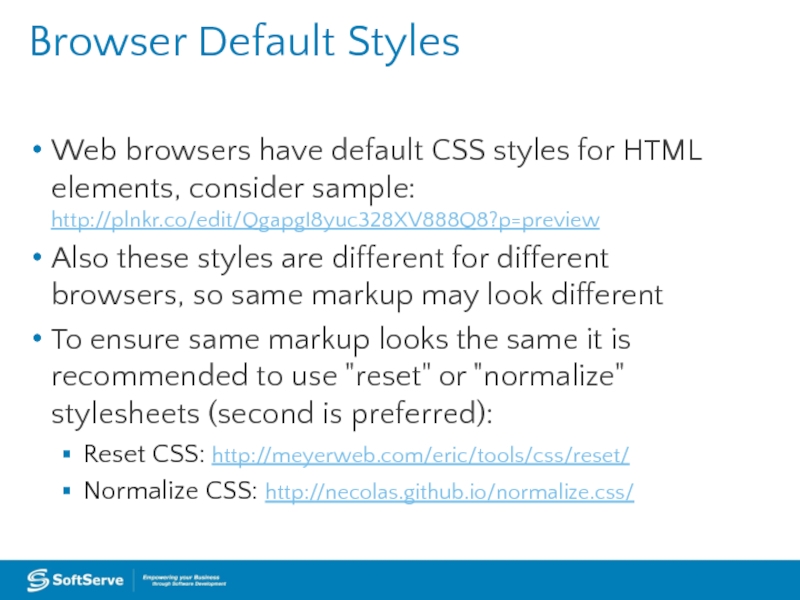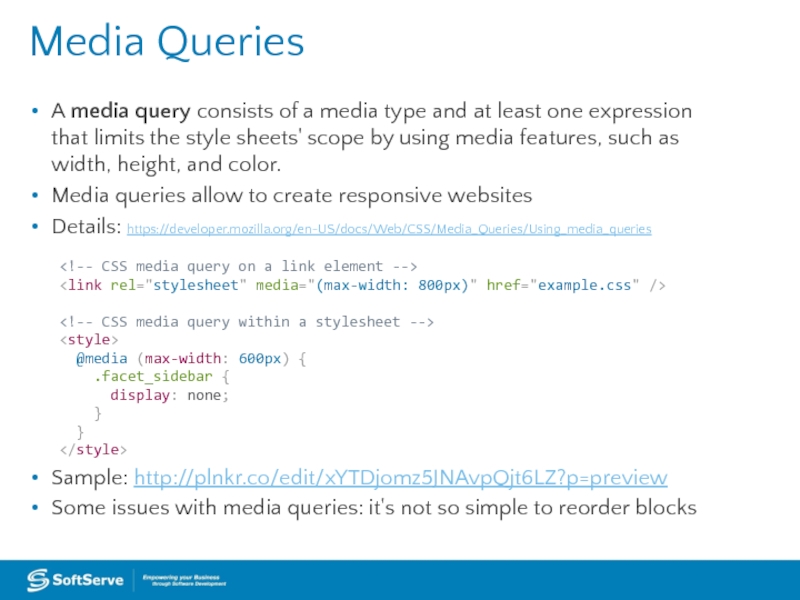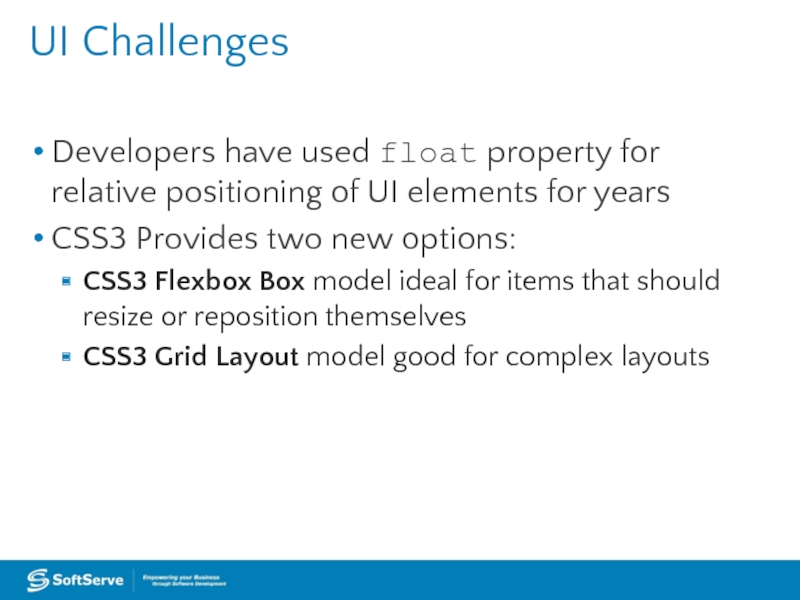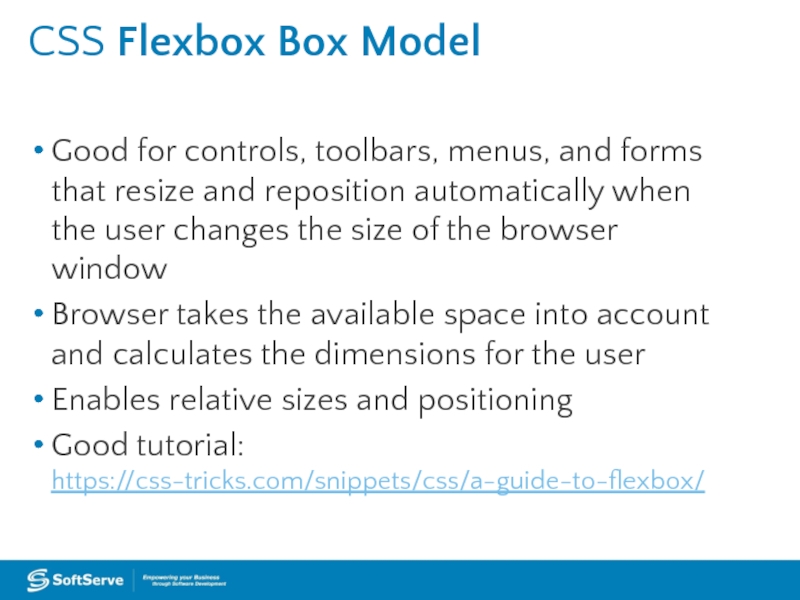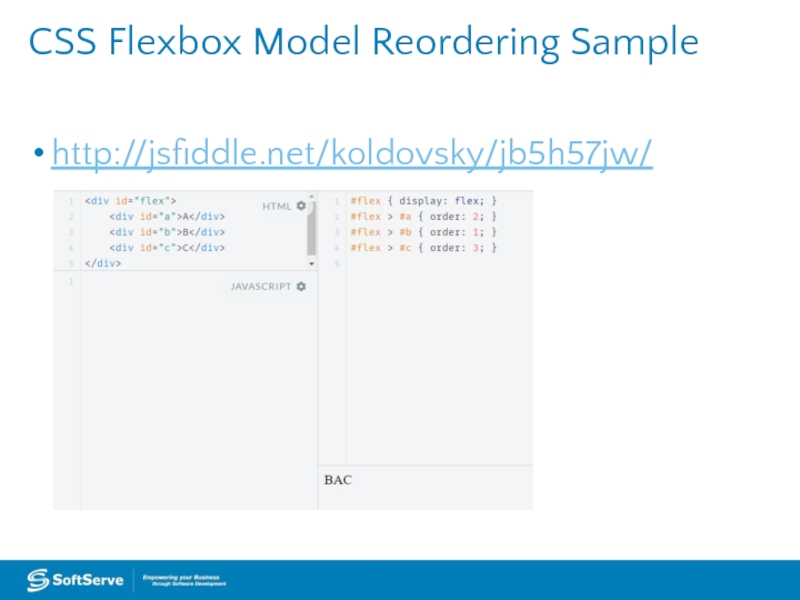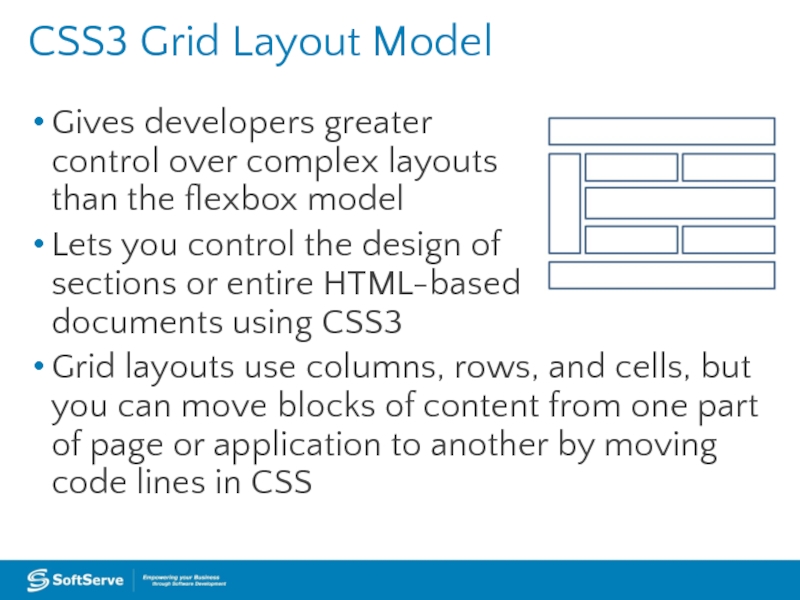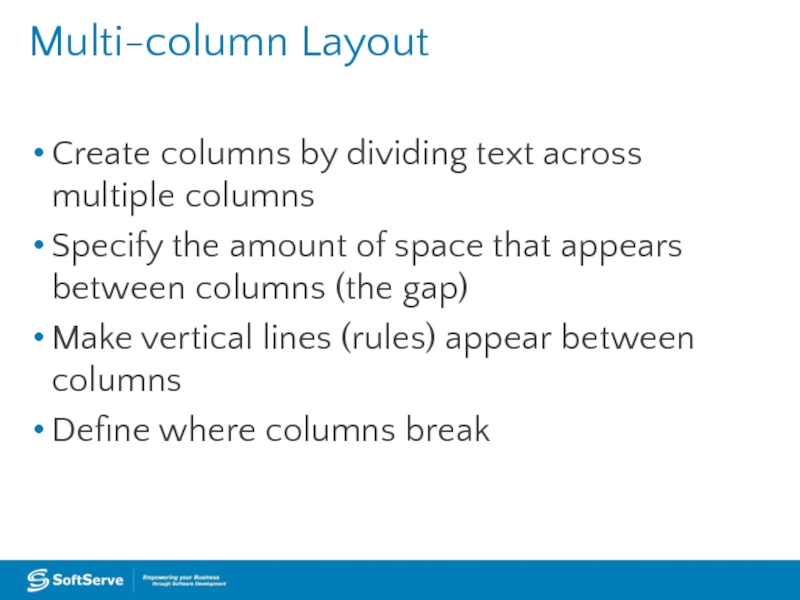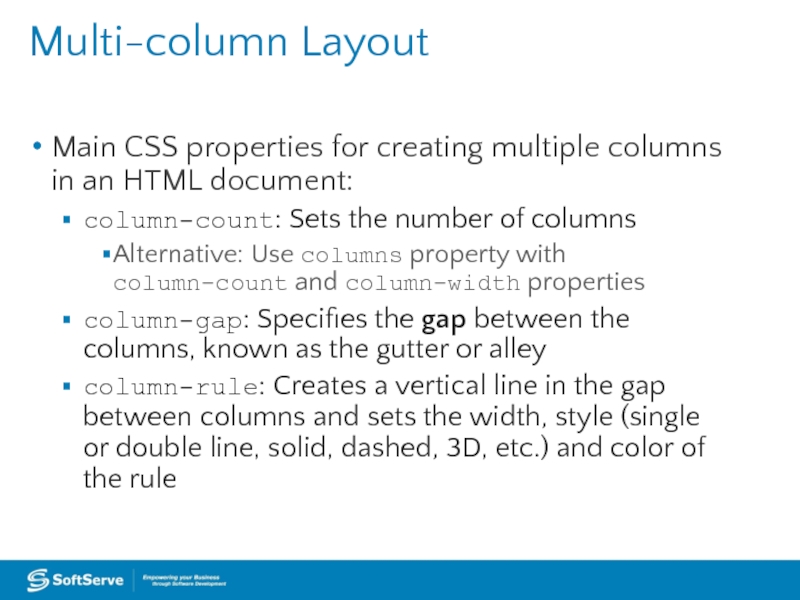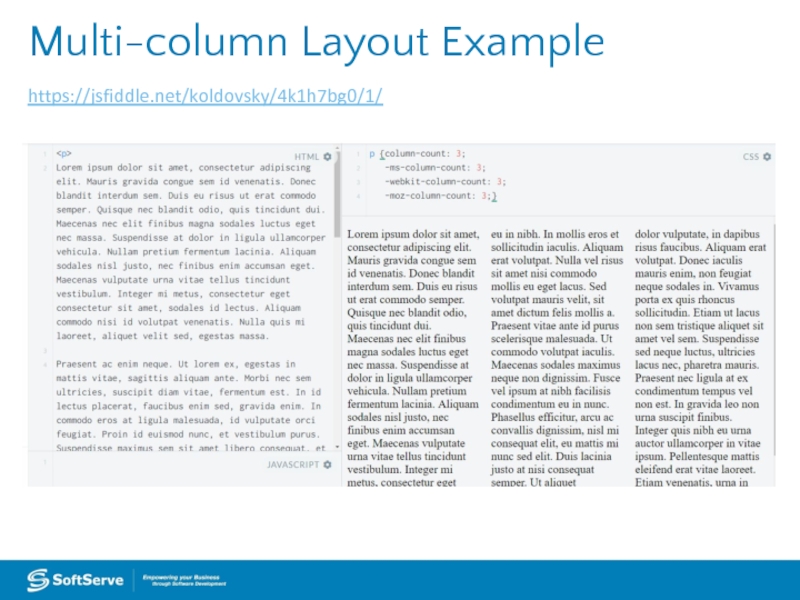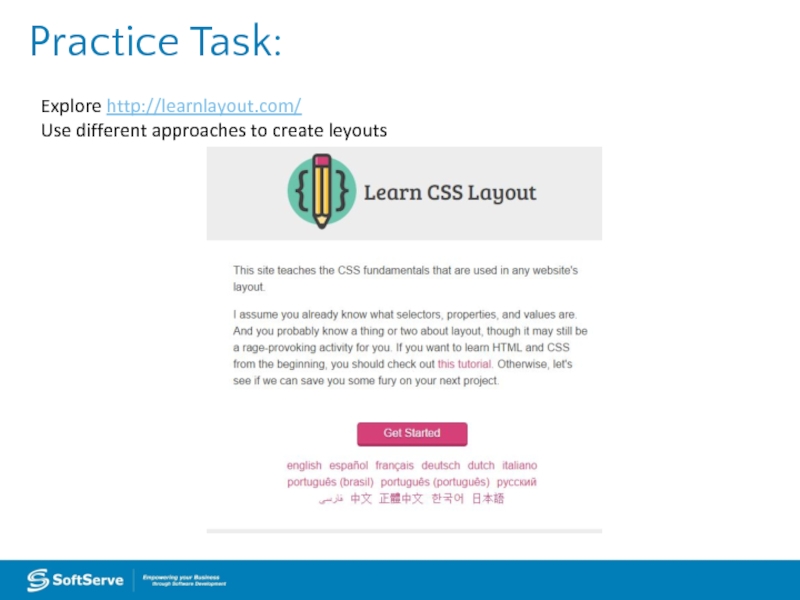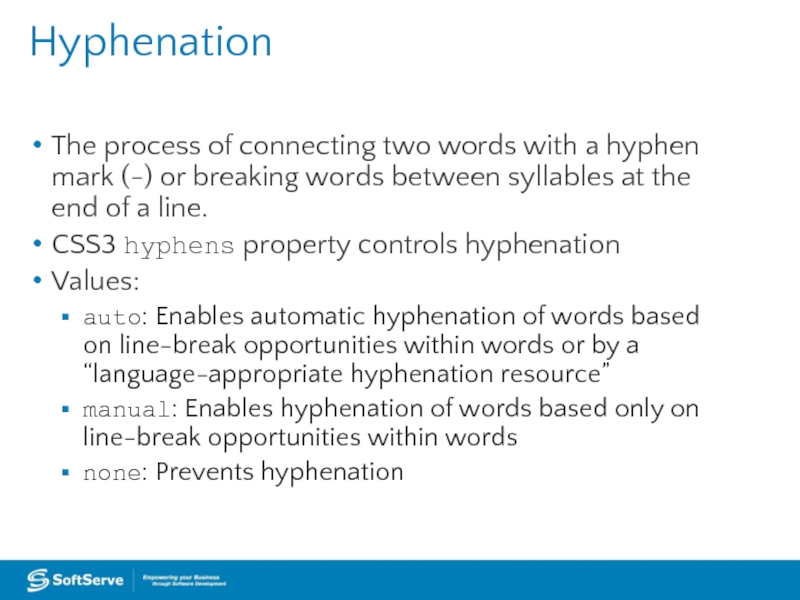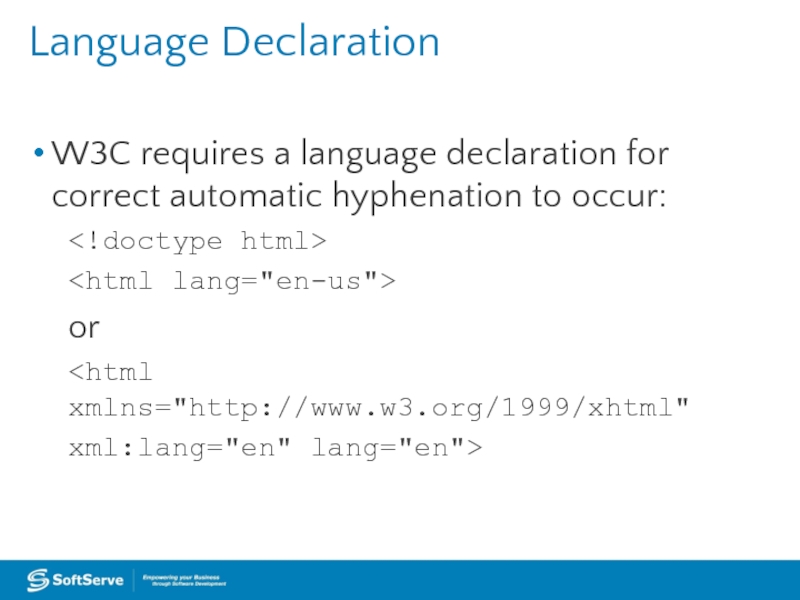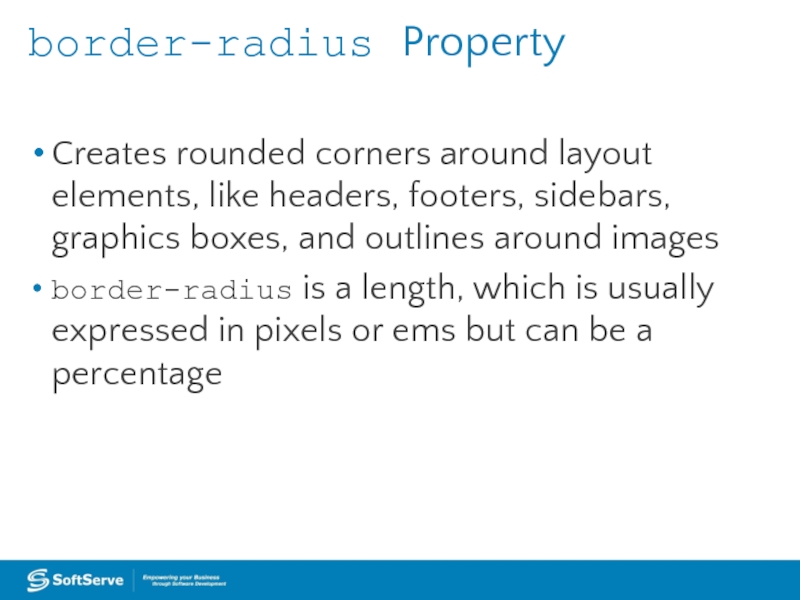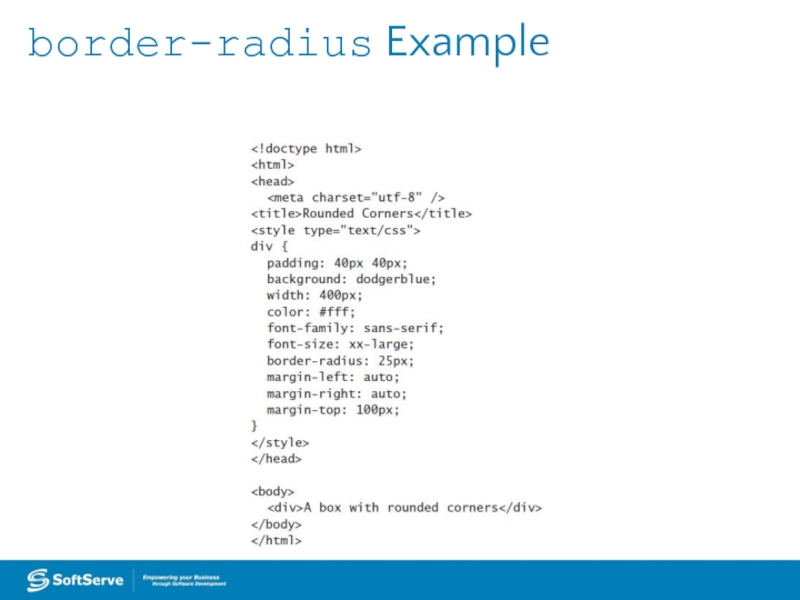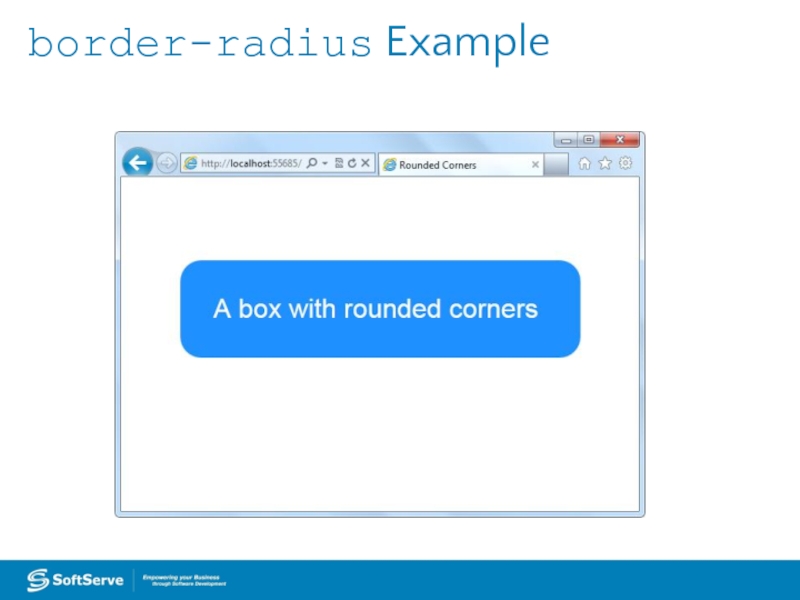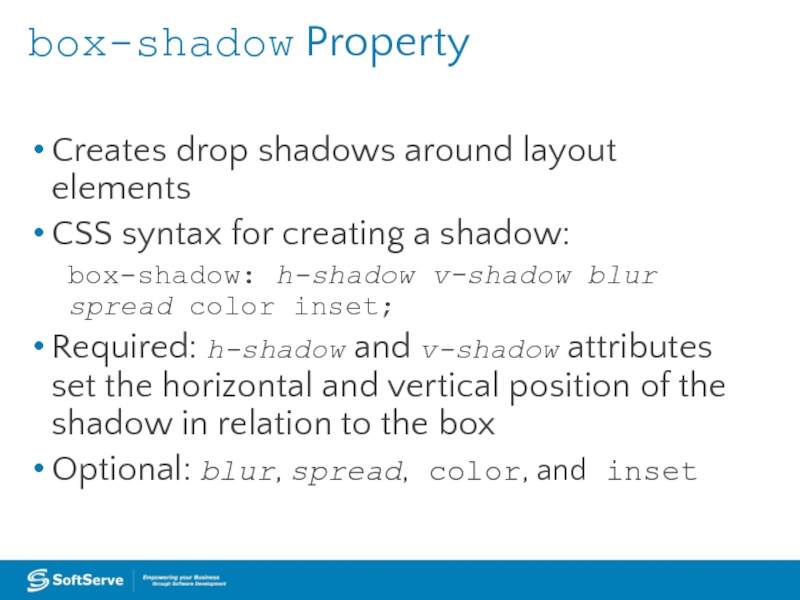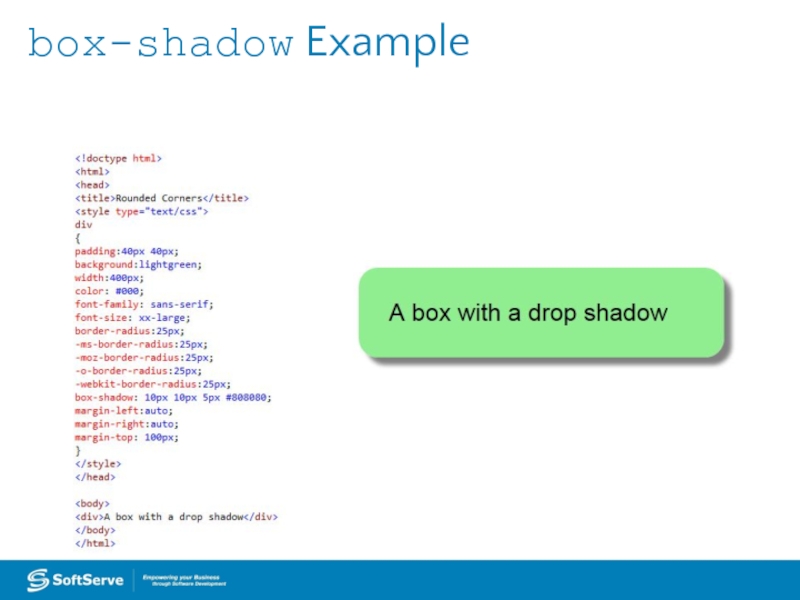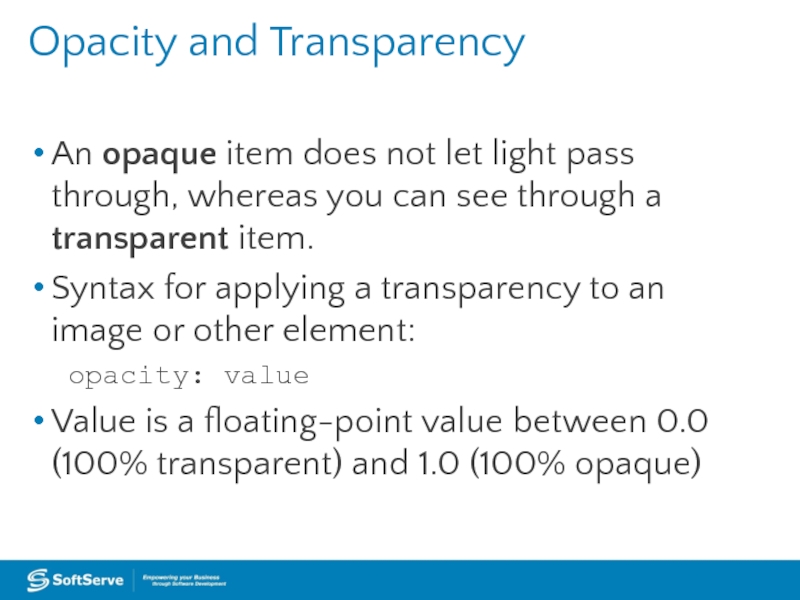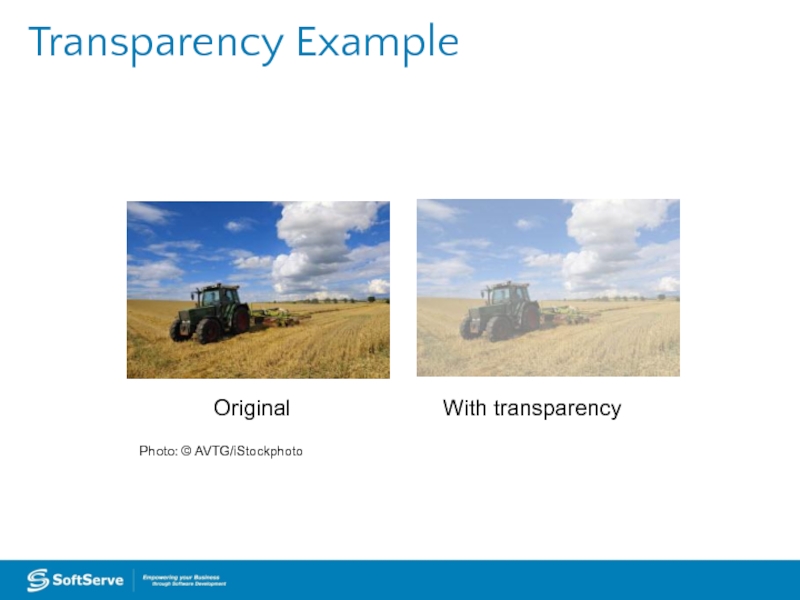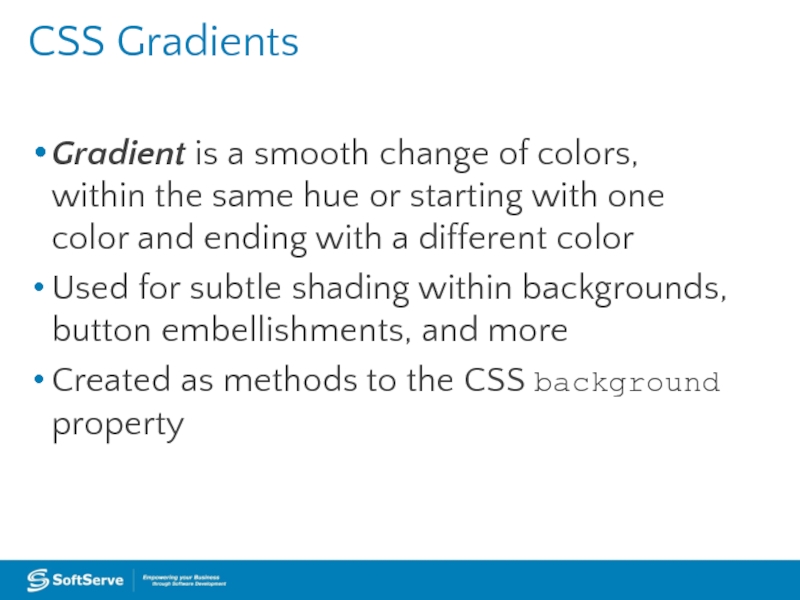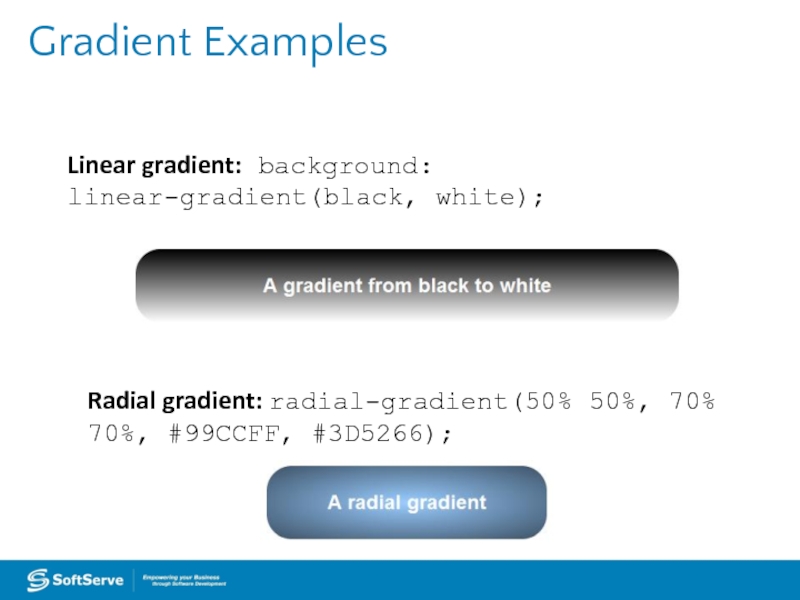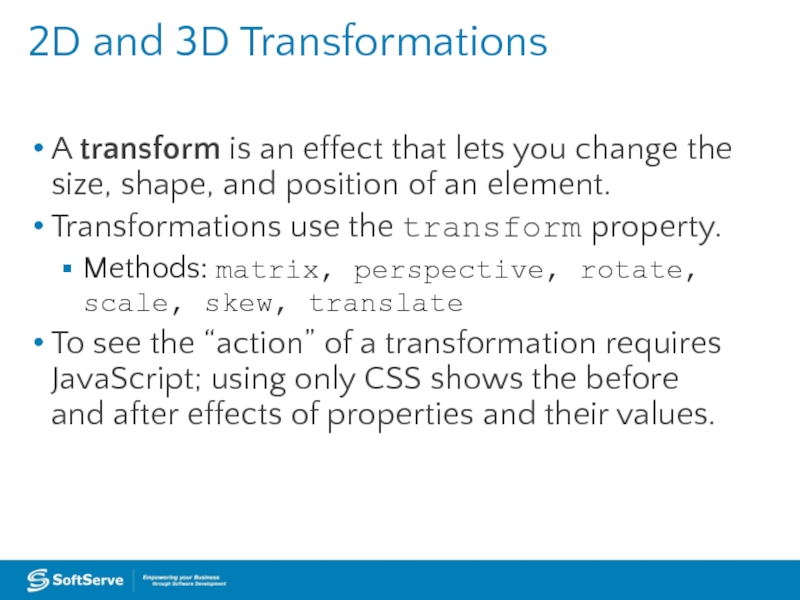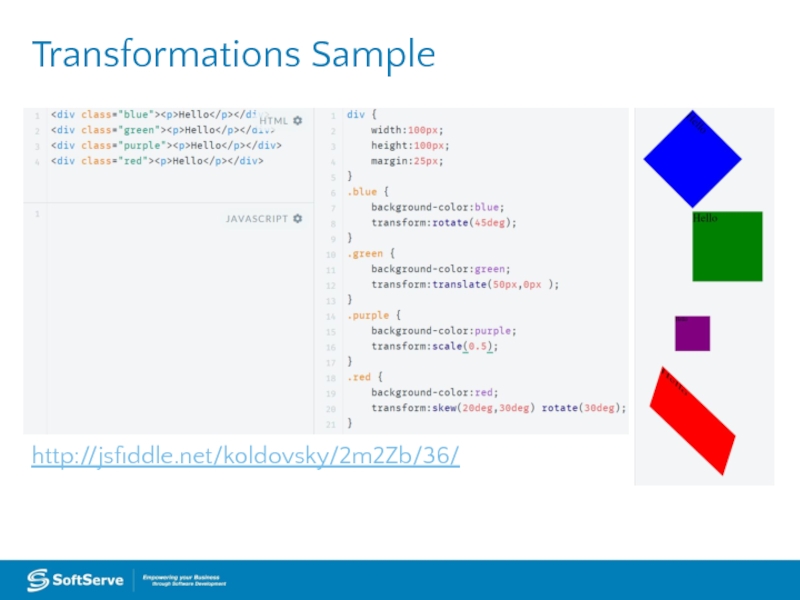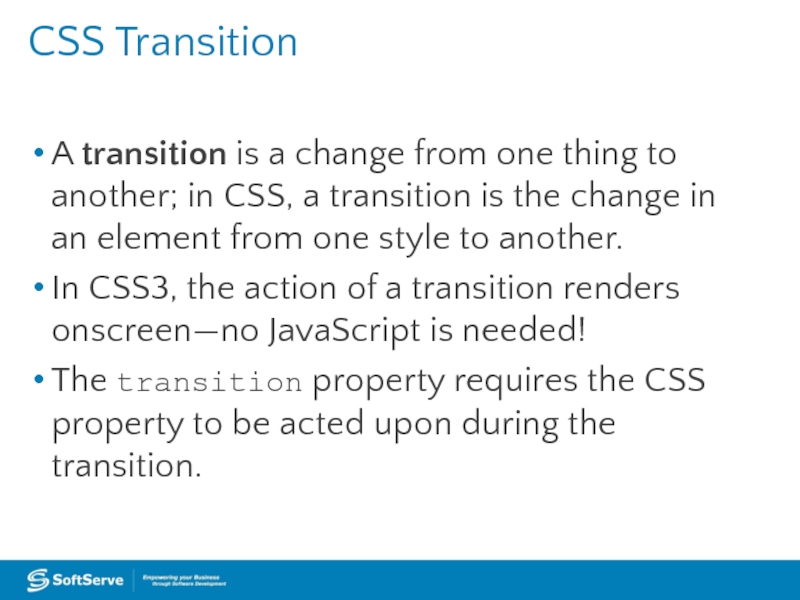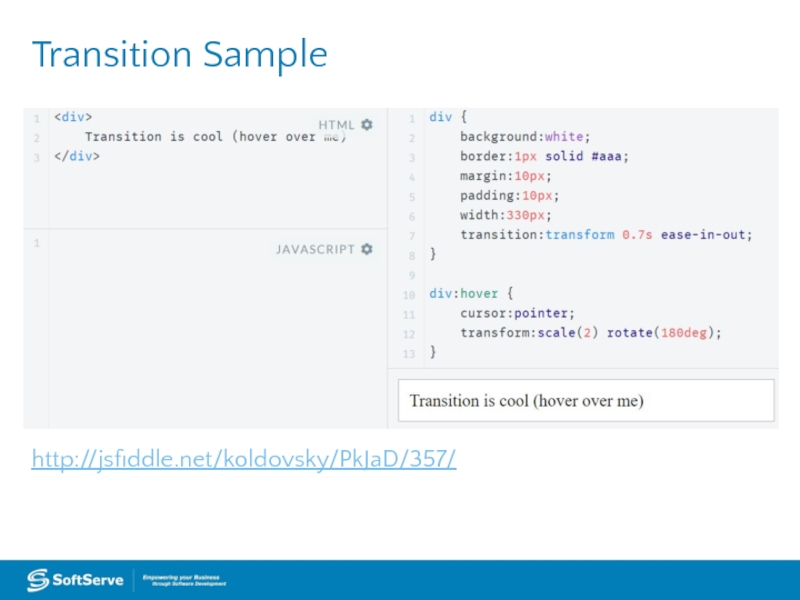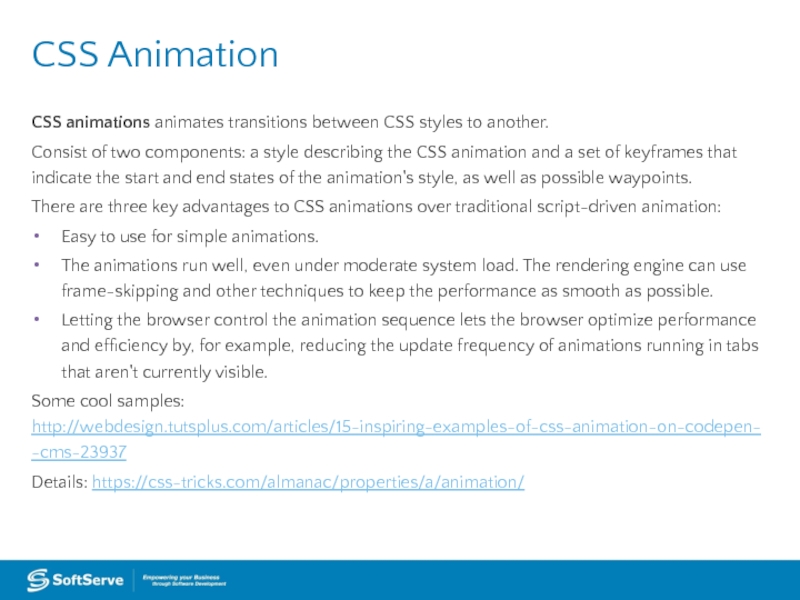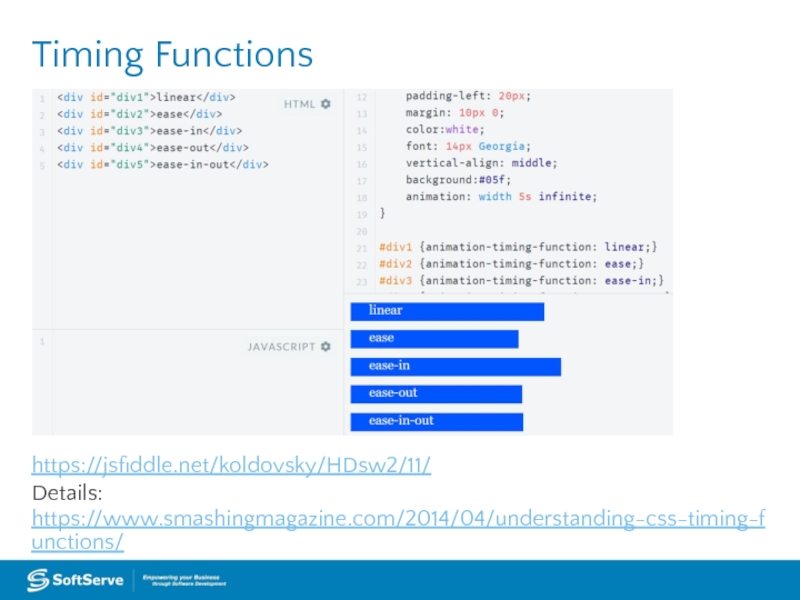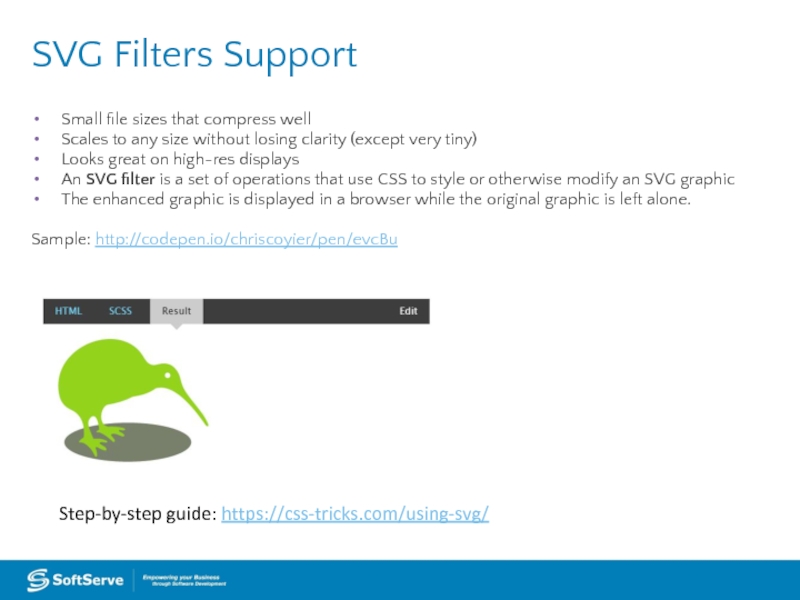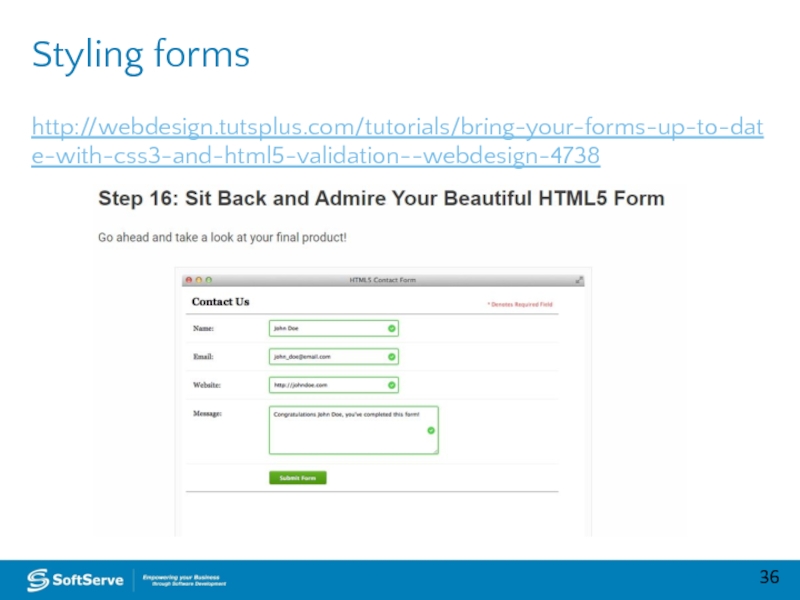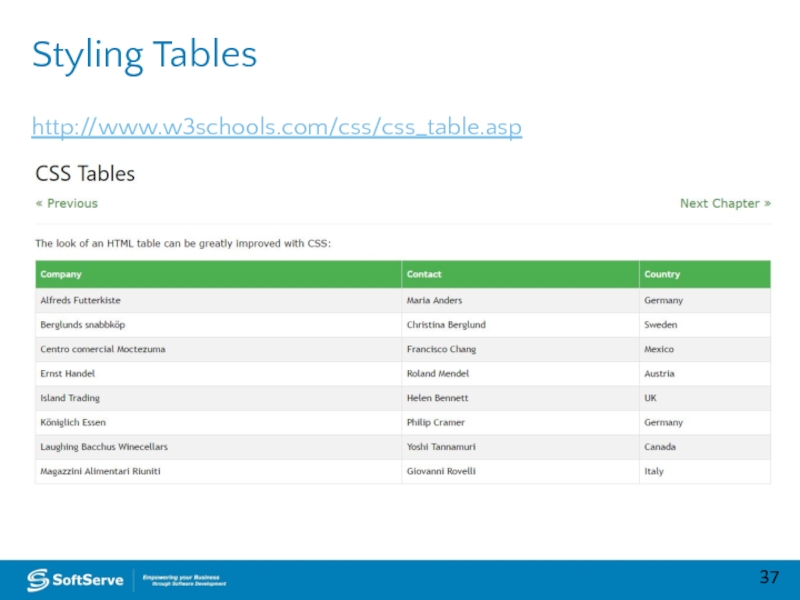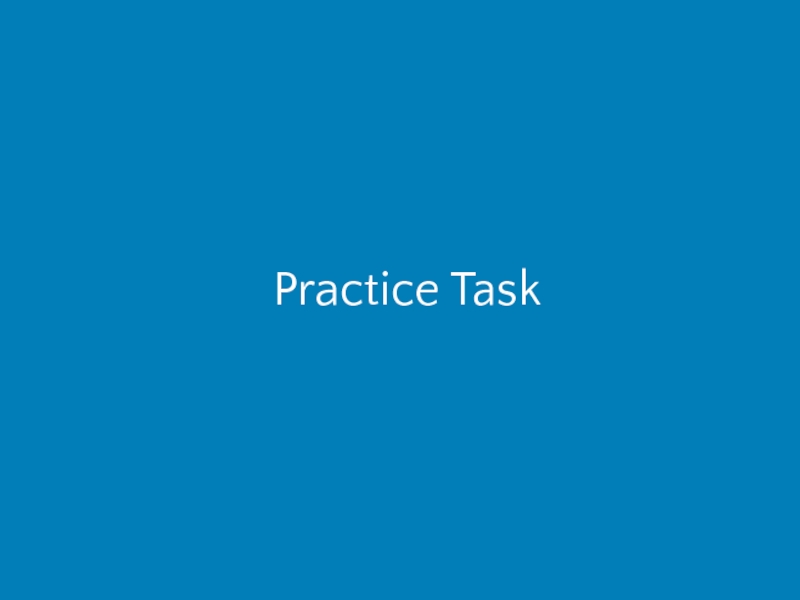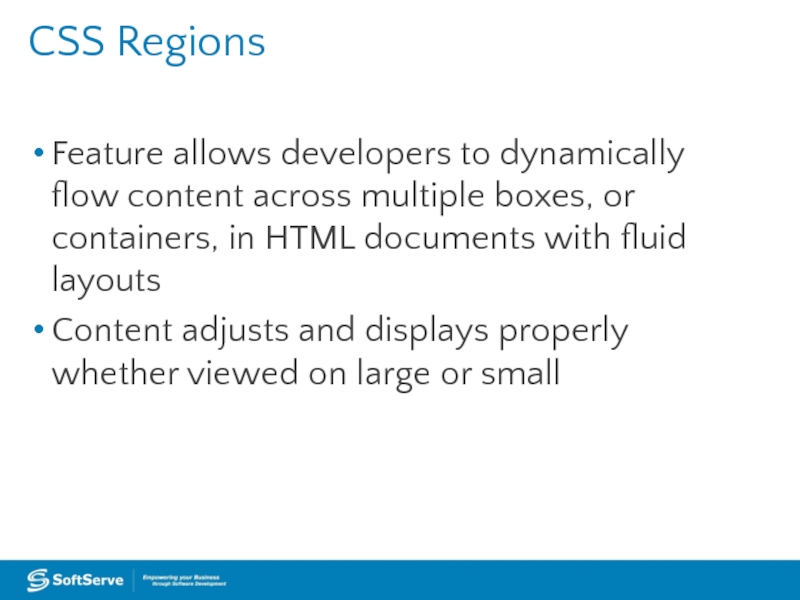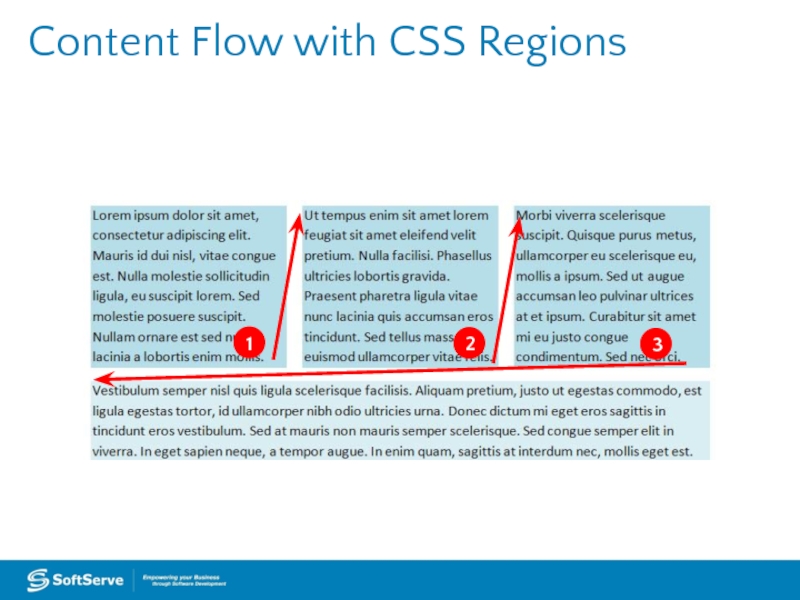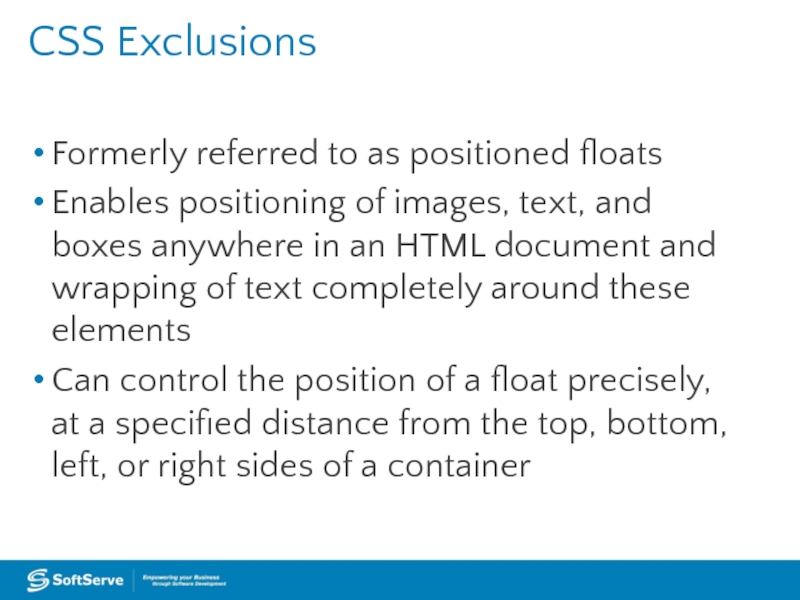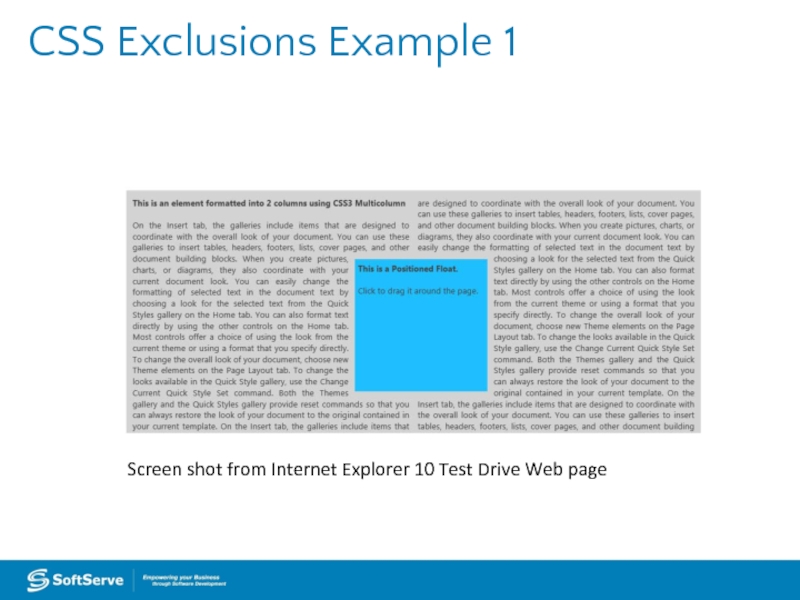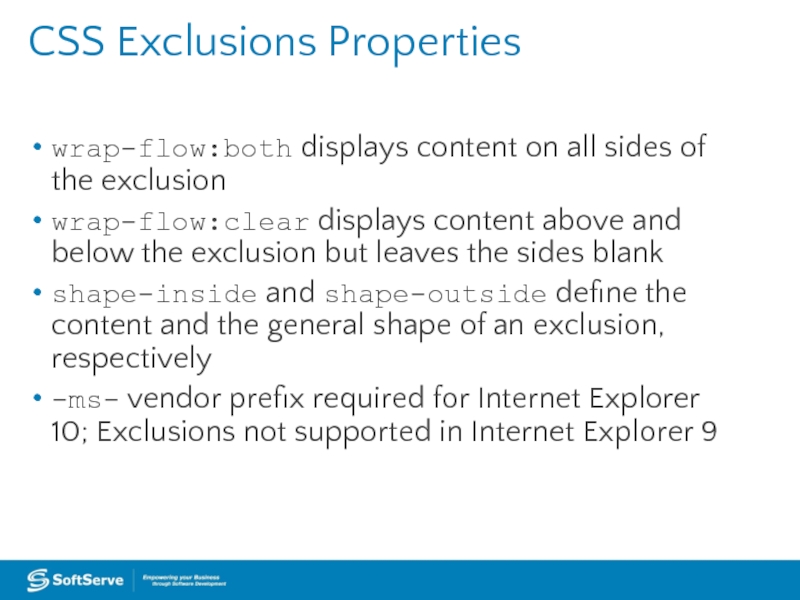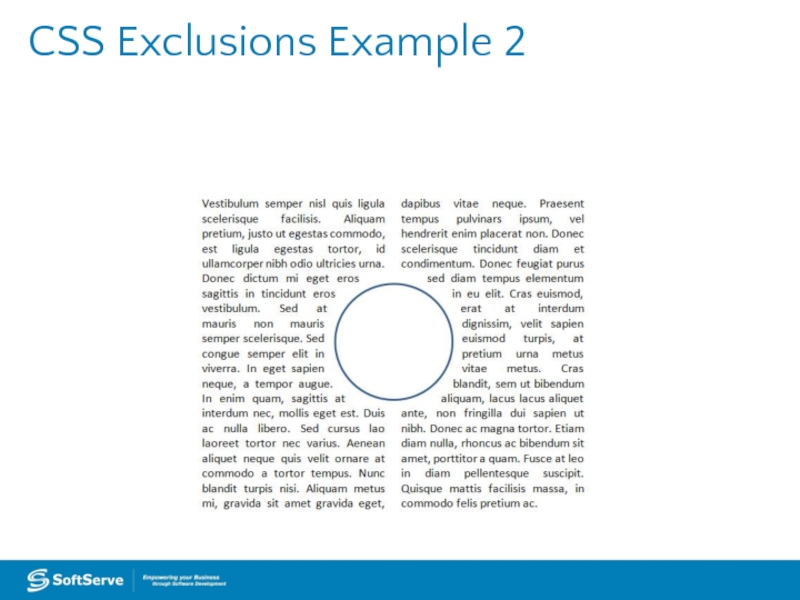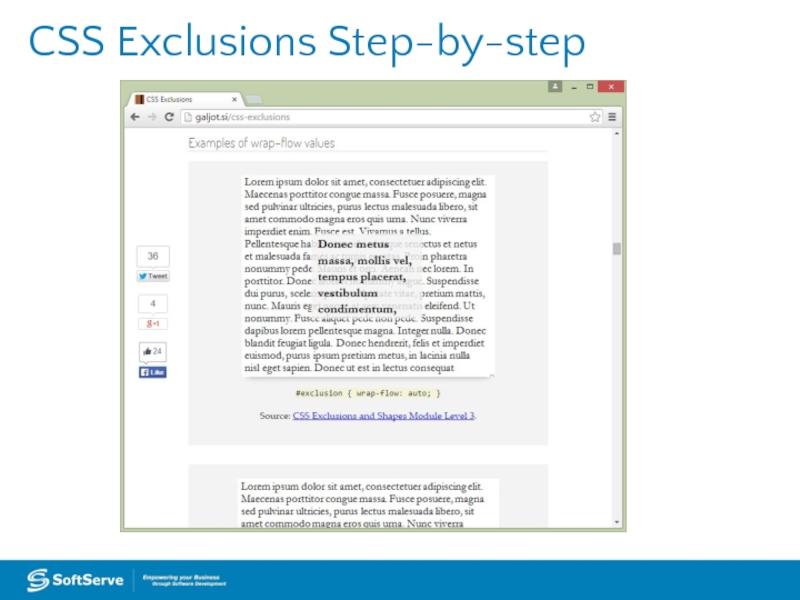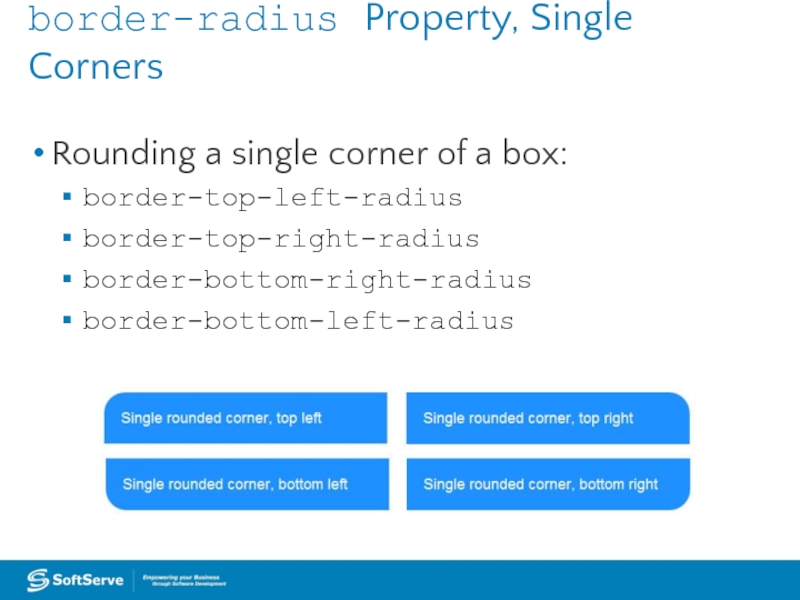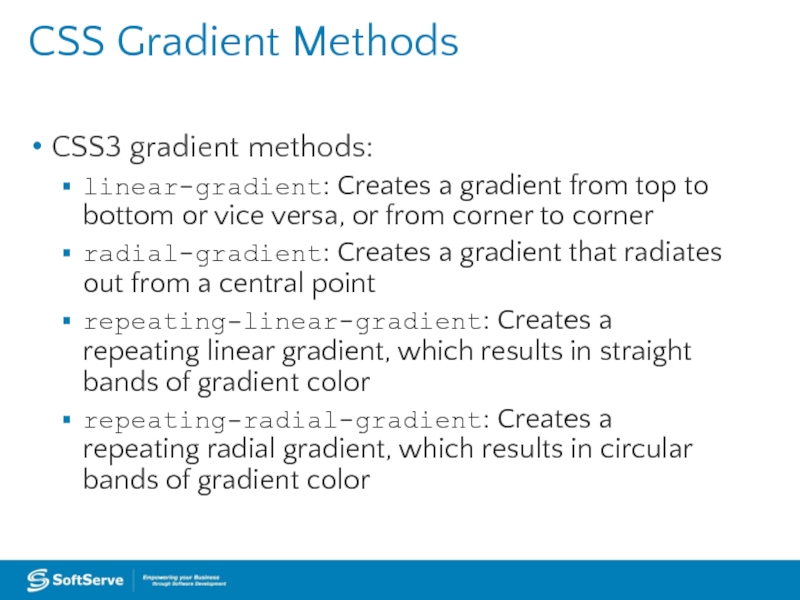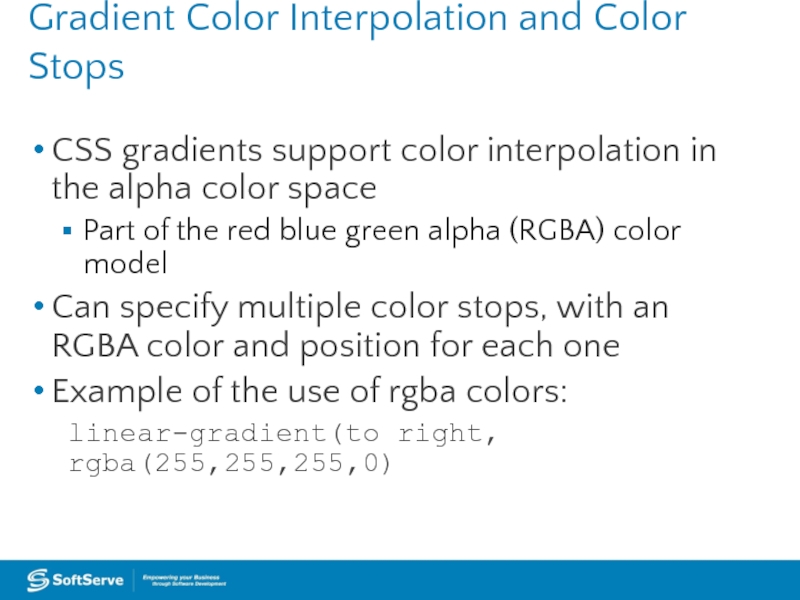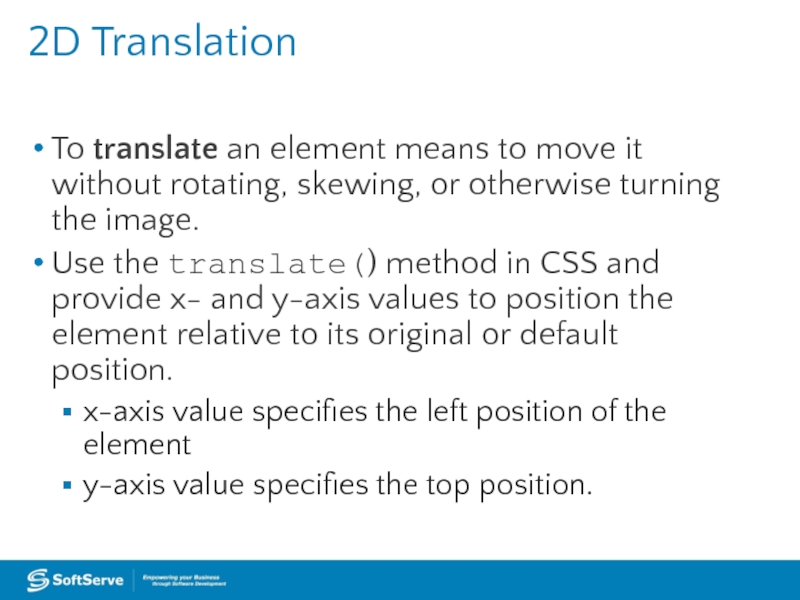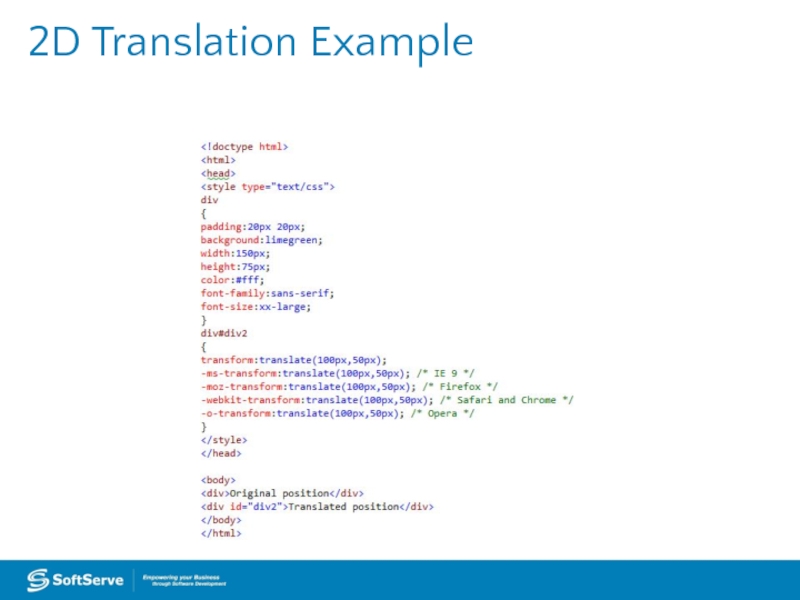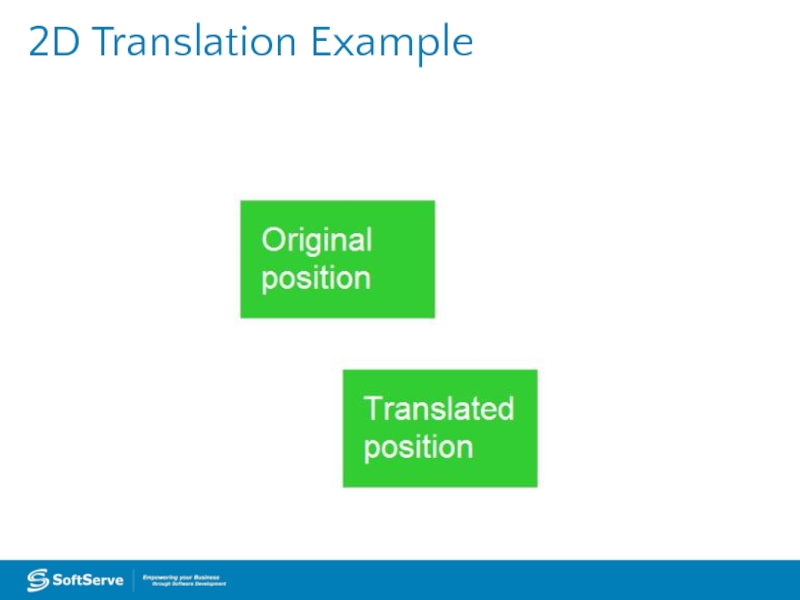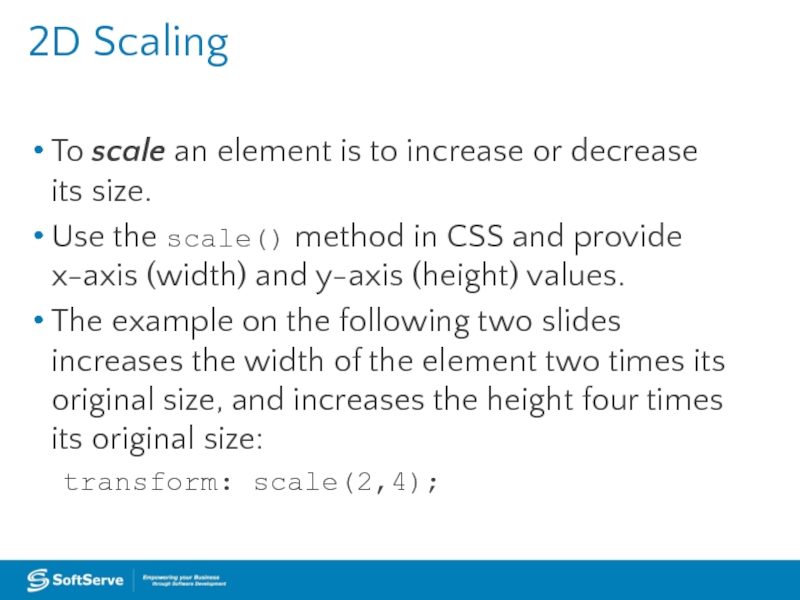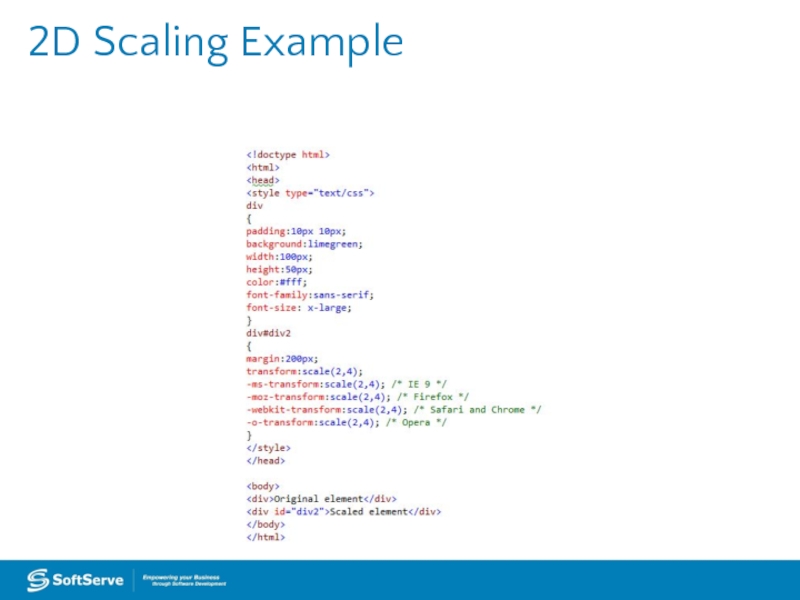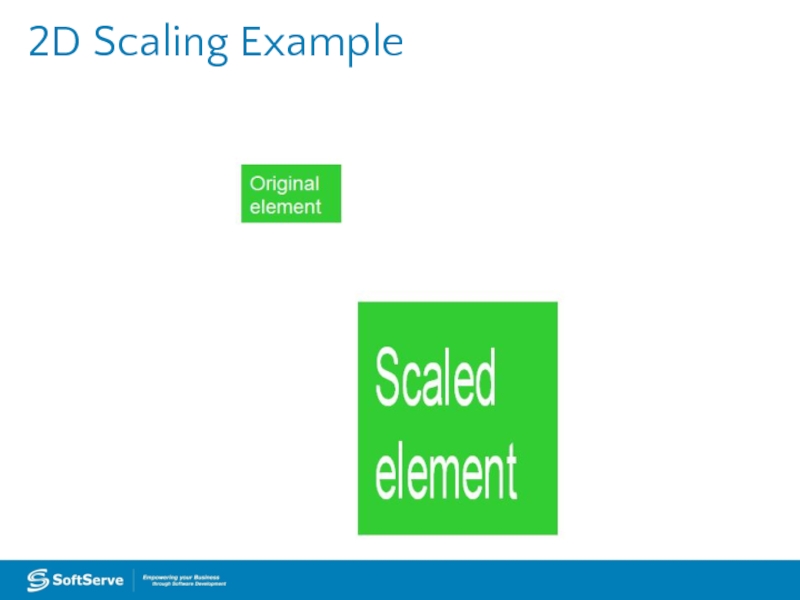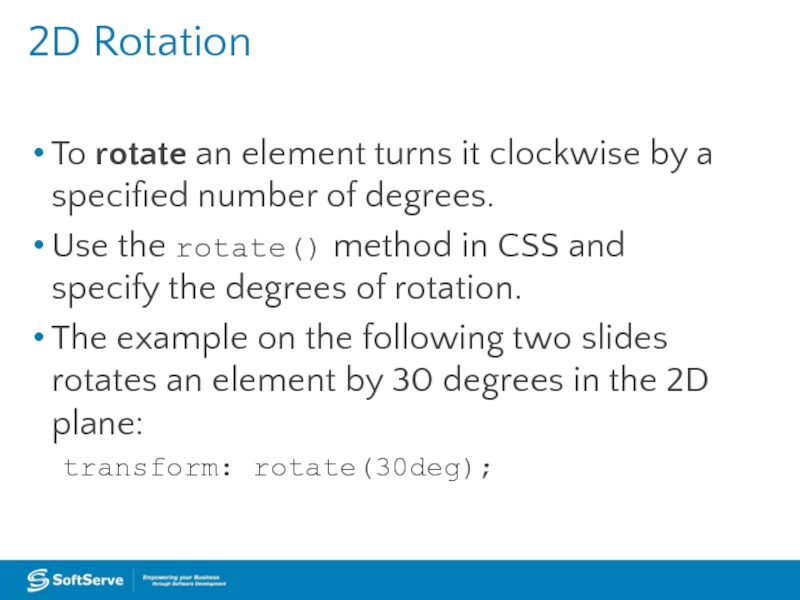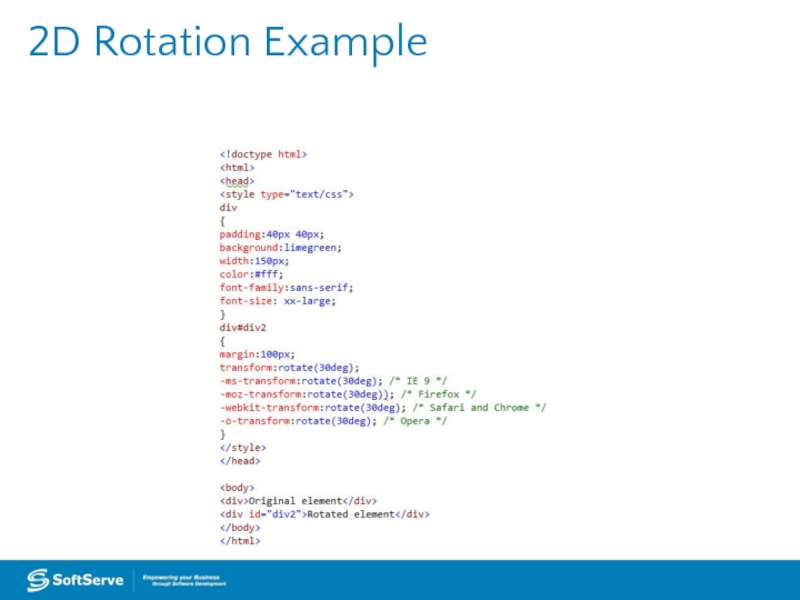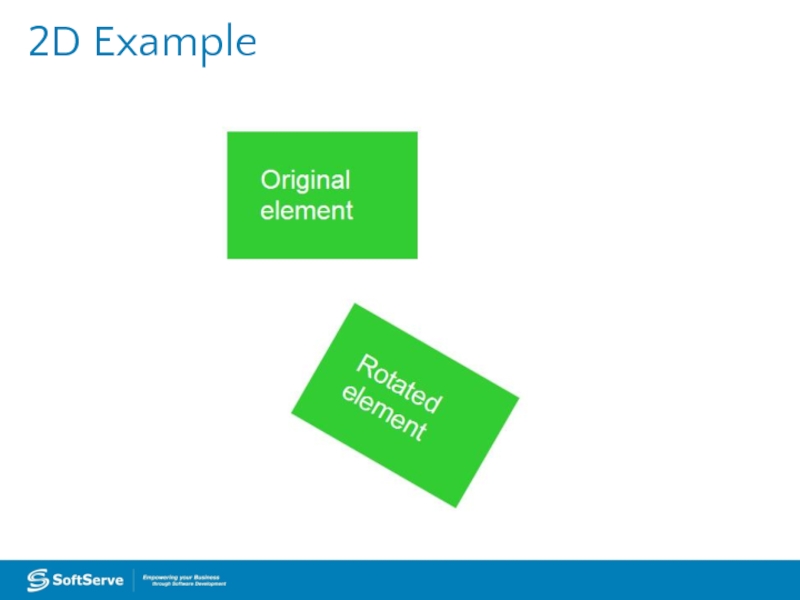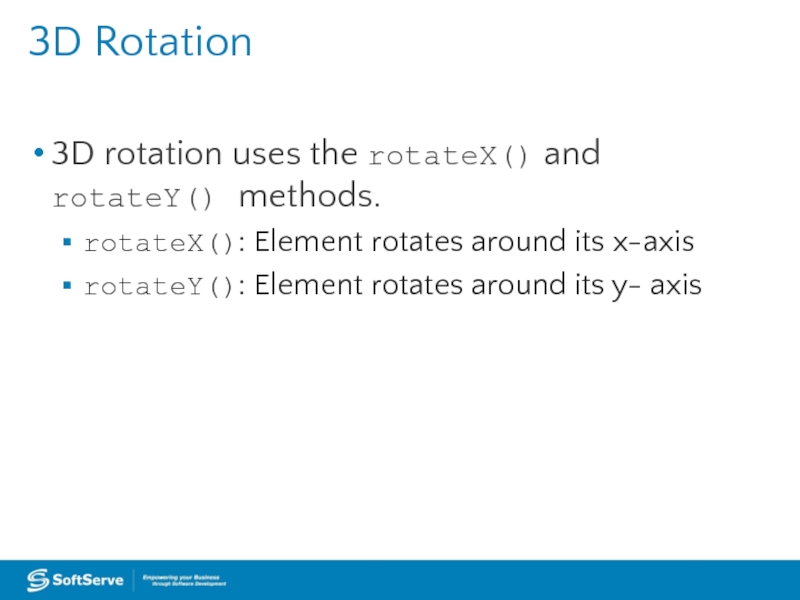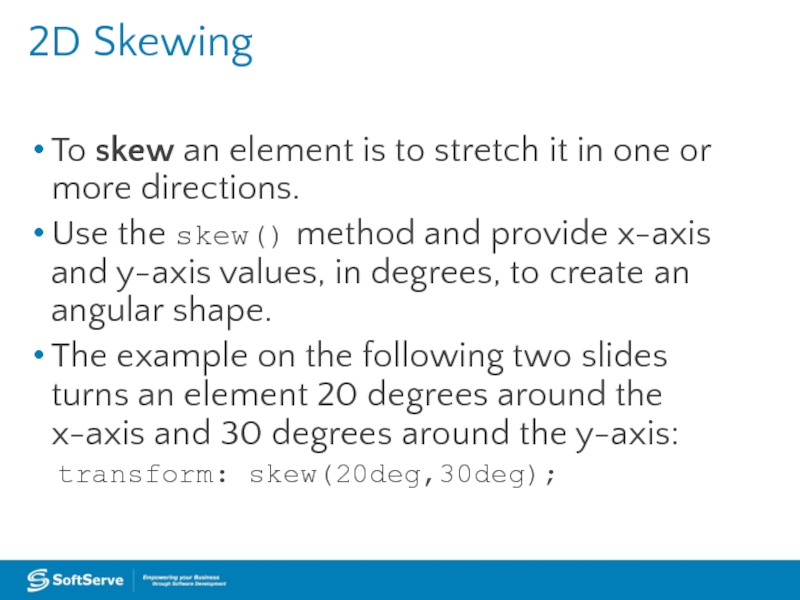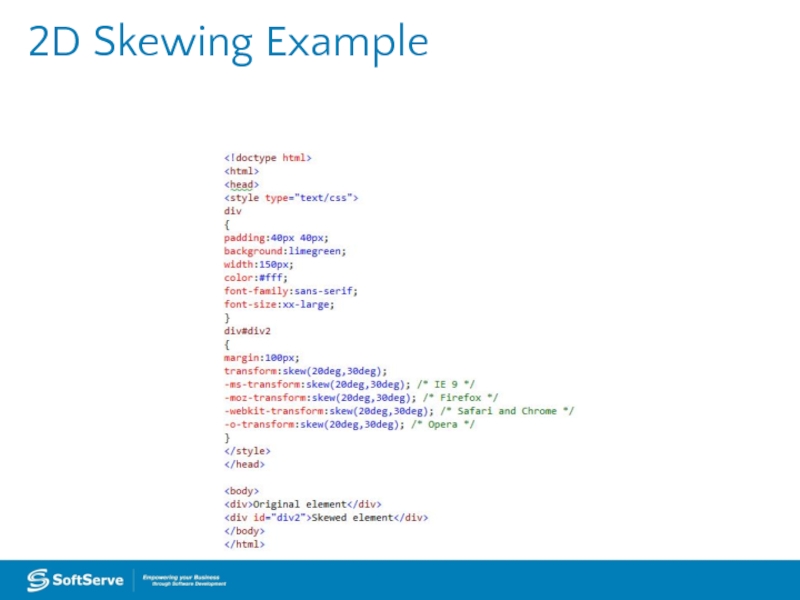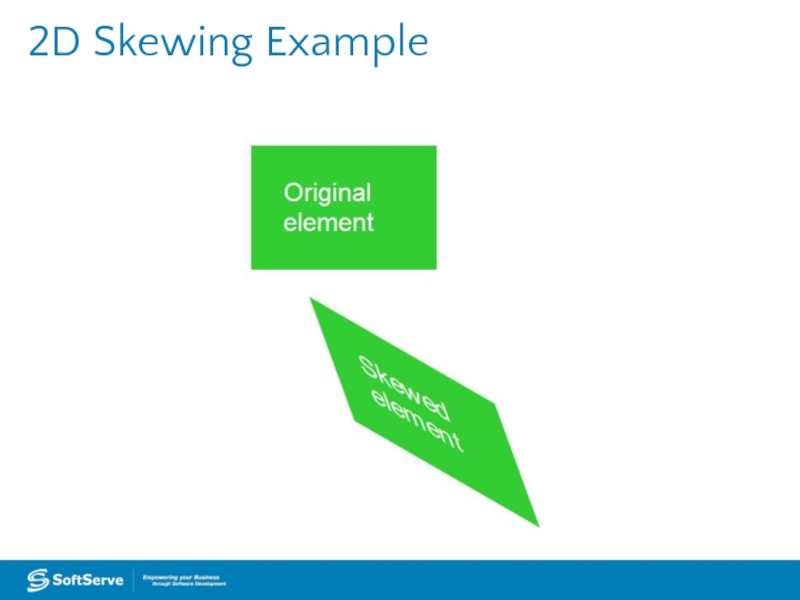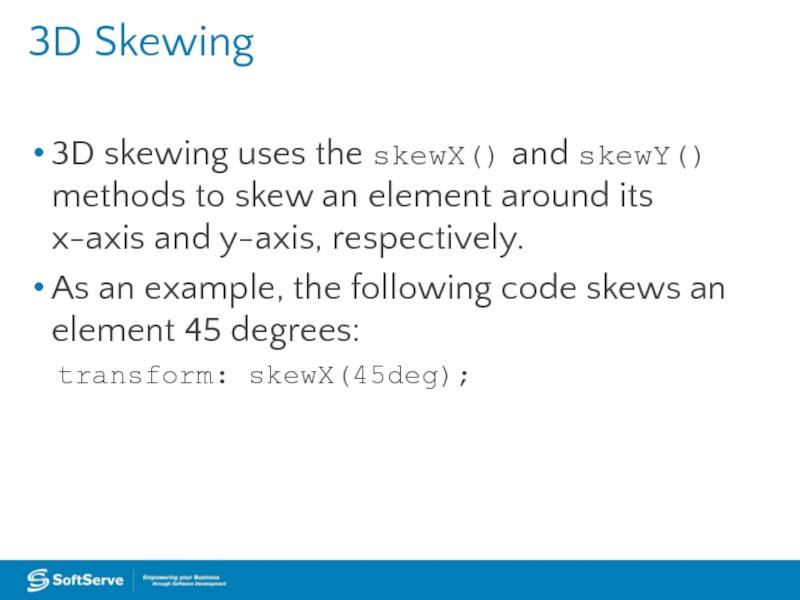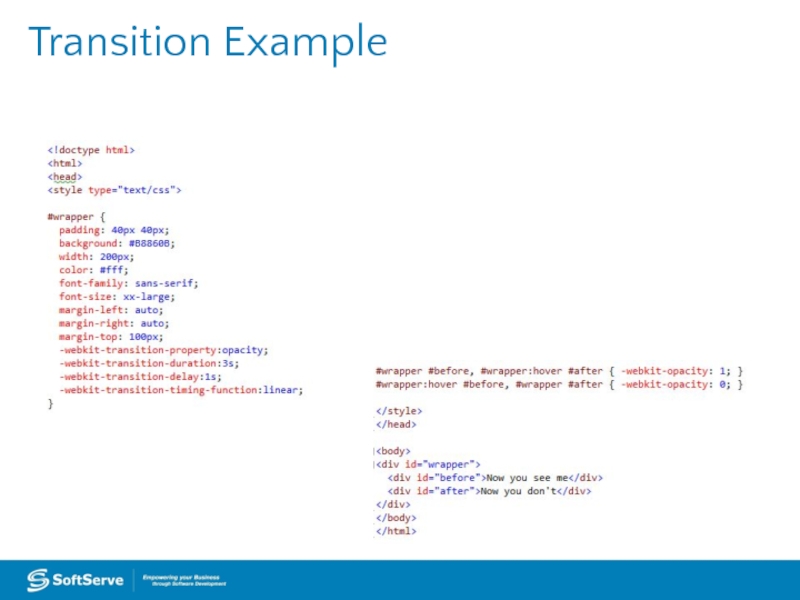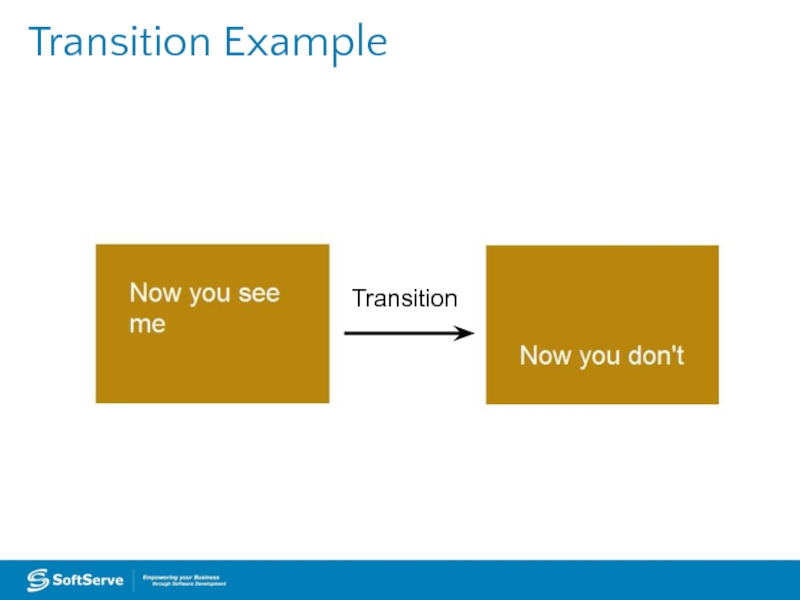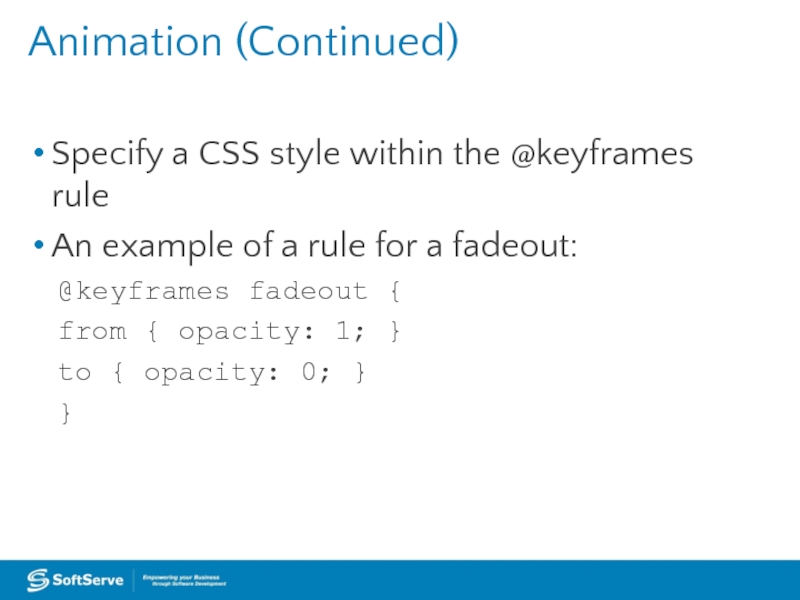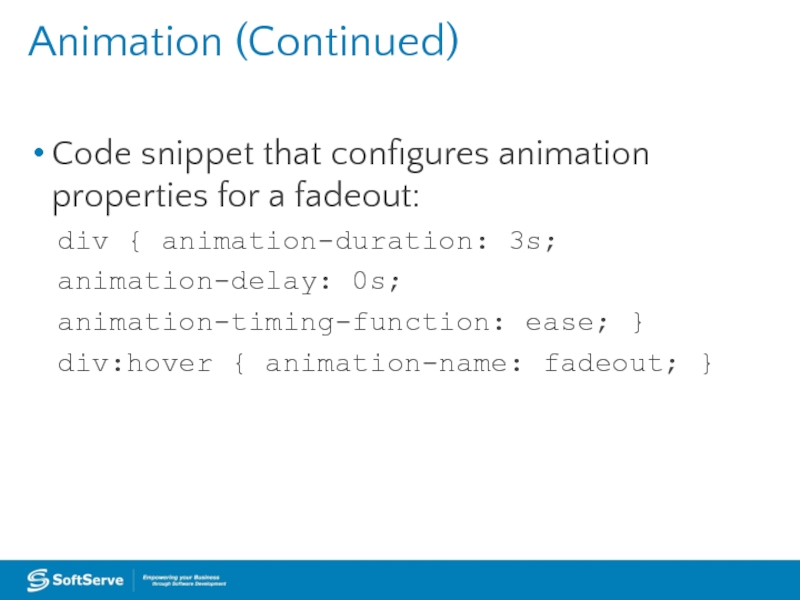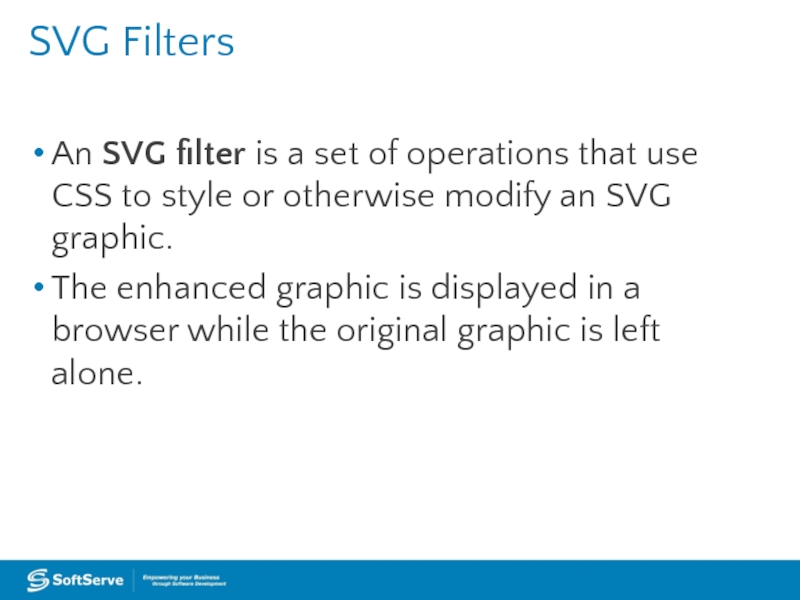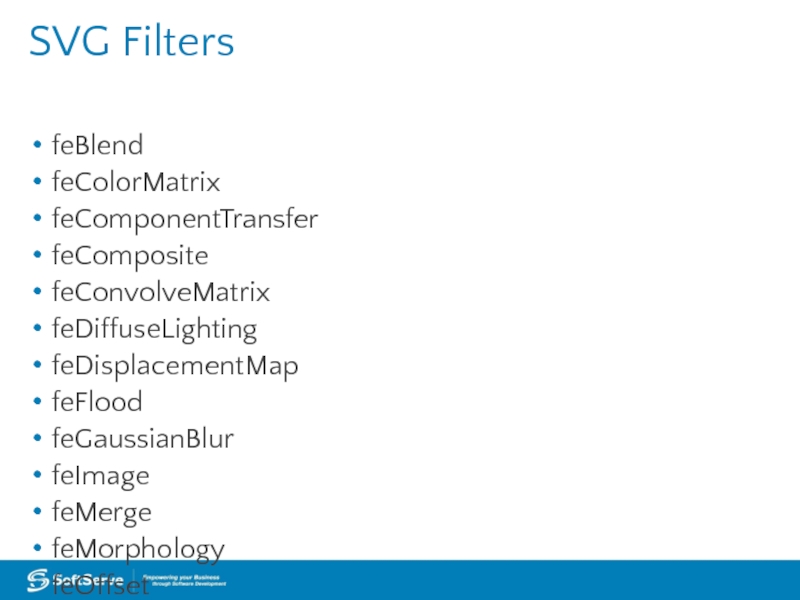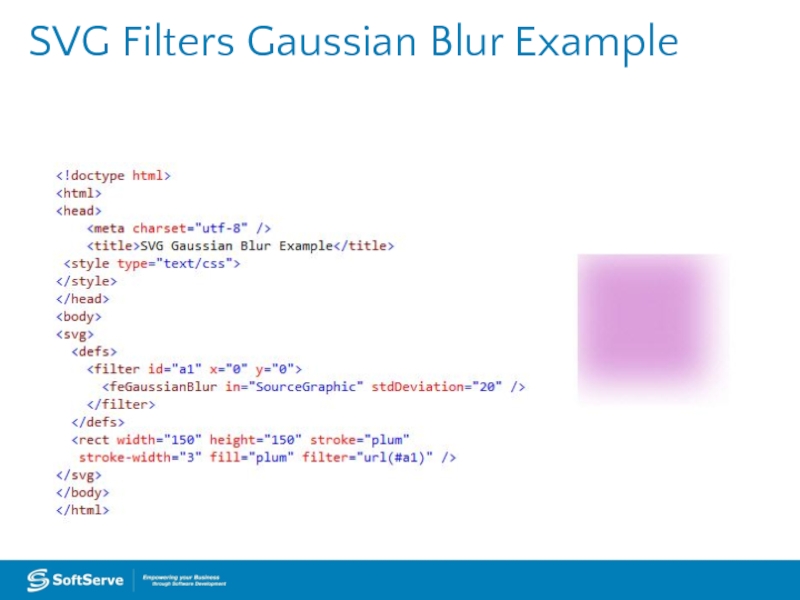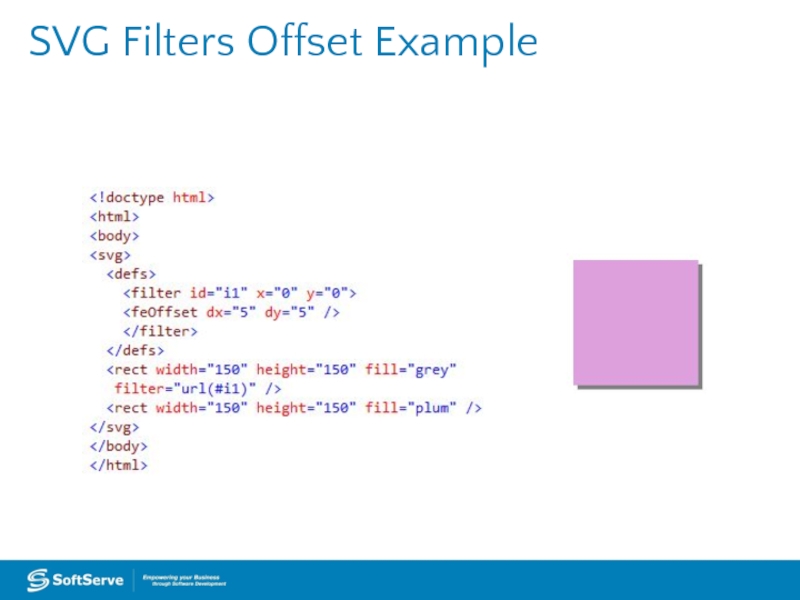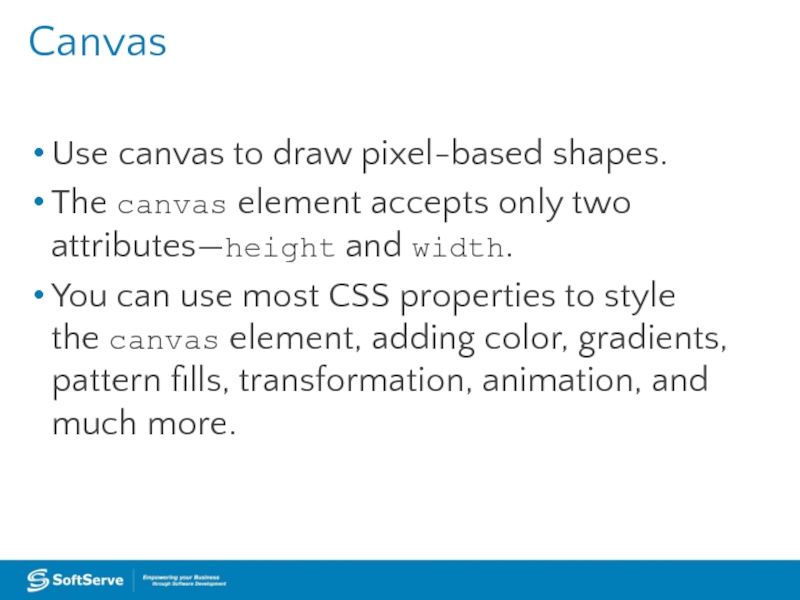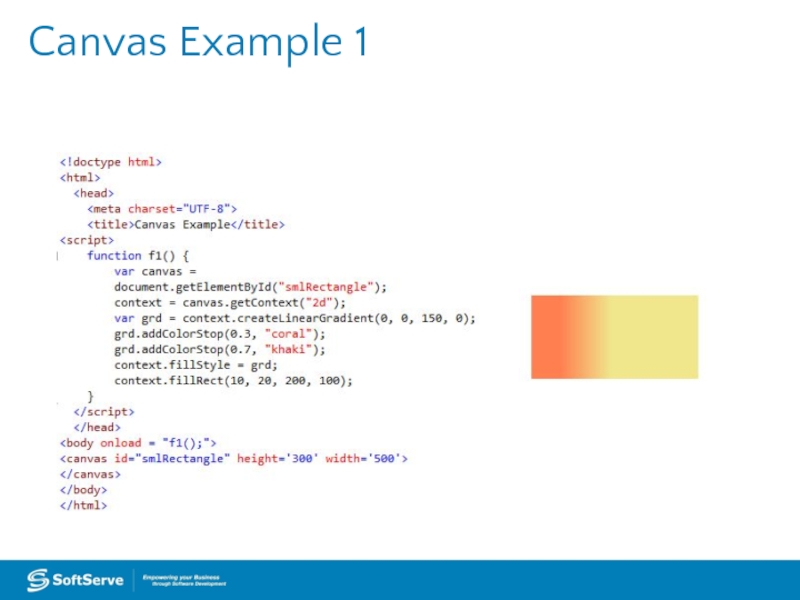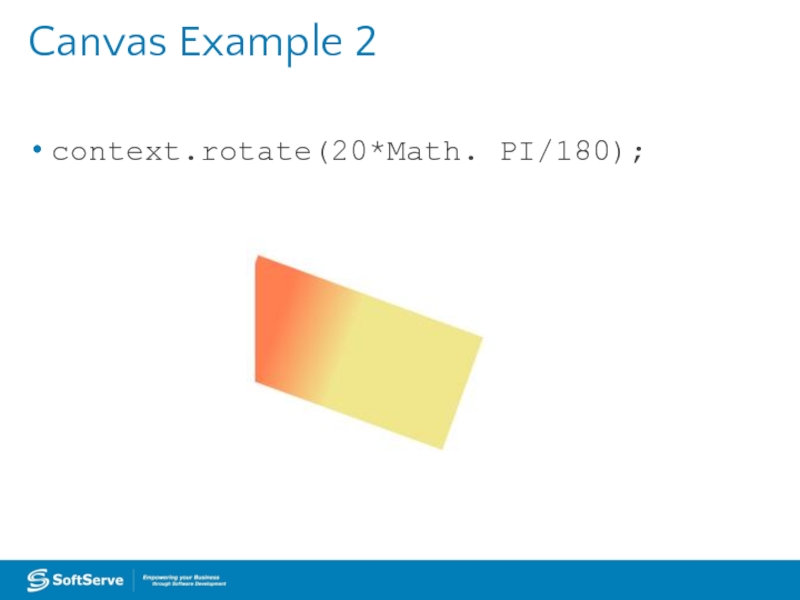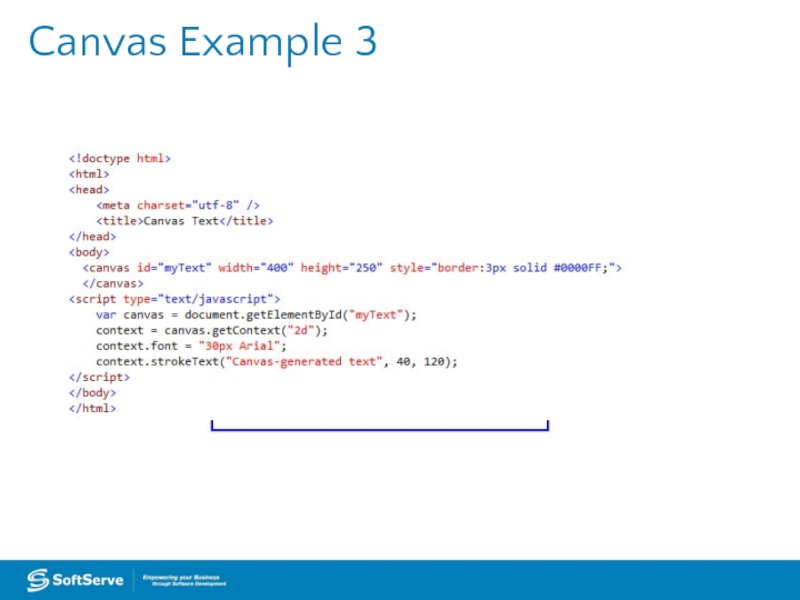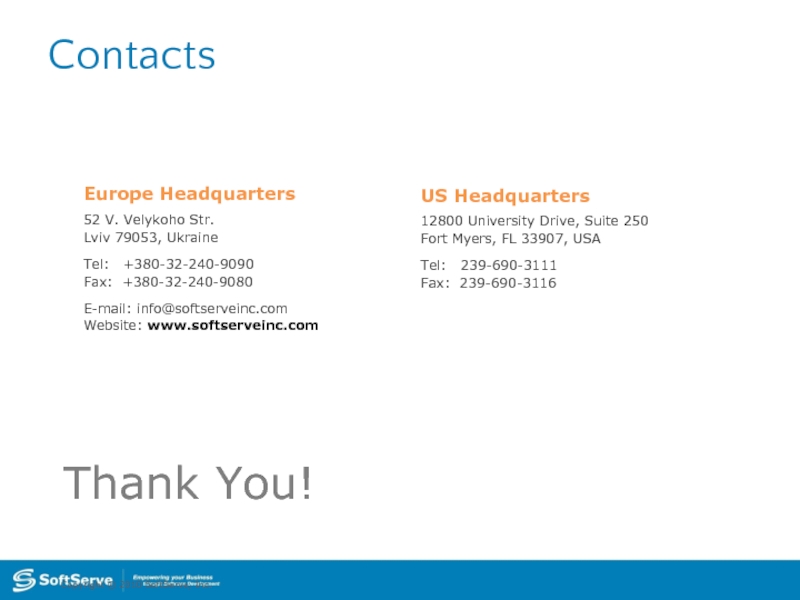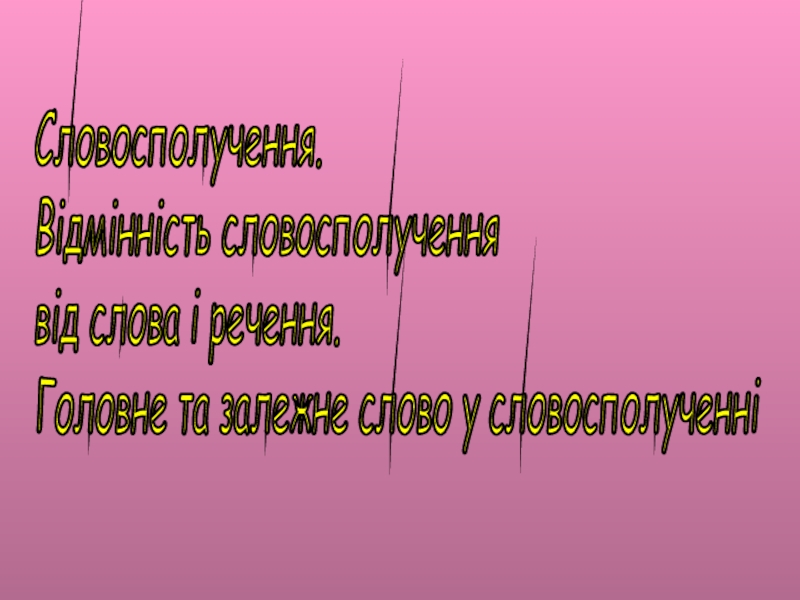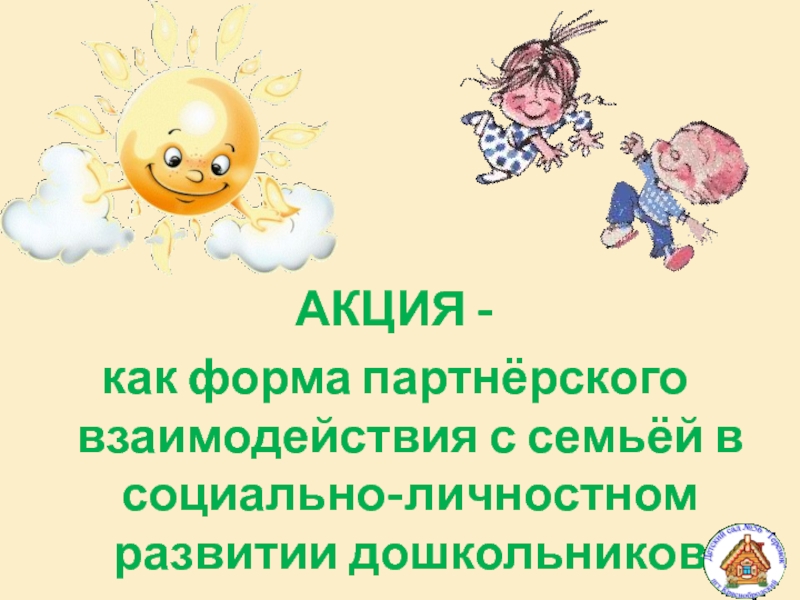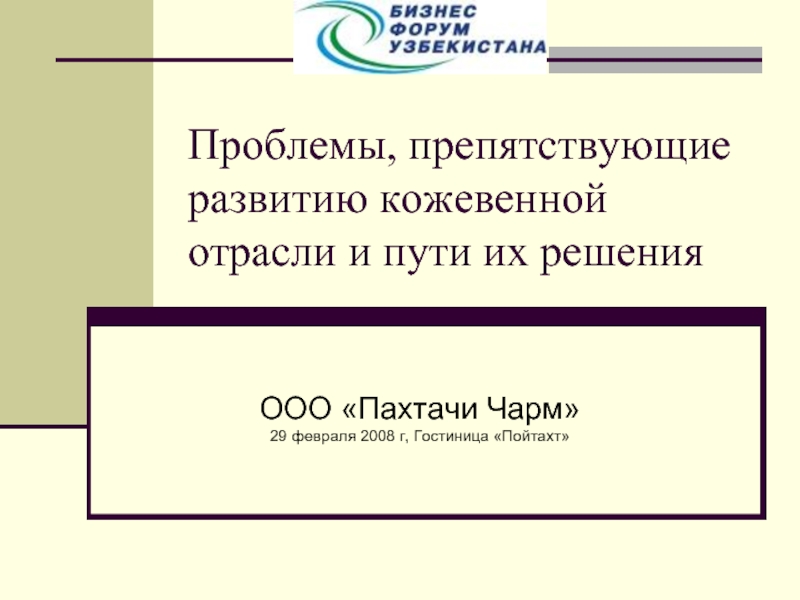- Главная
- Разное
- Дизайн
- Бизнес и предпринимательство
- Аналитика
- Образование
- Развлечения
- Красота и здоровье
- Финансы
- Государство
- Путешествия
- Спорт
- Недвижимость
- Армия
- Графика
- Культурология
- Еда и кулинария
- Лингвистика
- Английский язык
- Астрономия
- Алгебра
- Биология
- География
- Детские презентации
- Информатика
- История
- Литература
- Маркетинг
- Математика
- Медицина
- Менеджмент
- Музыка
- МХК
- Немецкий язык
- ОБЖ
- Обществознание
- Окружающий мир
- Педагогика
- Русский язык
- Технология
- Физика
- Философия
- Химия
- Шаблоны, картинки для презентаций
- Экология
- Экономика
- Юриспруденция
Understanding CSS. Essentials: layouts, managing text flow, managing the graphical interface презентация
Содержание
- 1. Understanding CSS. Essentials: layouts, managing text flow, managing the graphical interface
- 2. Agenda UI design Traditional CSS Box
- 3. Vendor Prefixes CSS3 specification is still in
- 4. Two CSS box models Box models In
- 5. http://jsfiddle.net/koldovsky/e1984en9/1/ Box model sample
- 6. Inherited Properties A parent box can contain
- 7. Browser Default Styles Web browsers have default
- 8. Media Queries A media query consists of a media
- 9. UI Challenges Developers have used float property
- 10. CSS Flexbox Box Model Good for controls,
- 11. CSS Flexbox Model Reordering Sample http://jsfiddle.net/koldovsky/jb5h57jw/
- 12. CSS3 Grid Layout Model Gives developers greater
- 13. Multi-column Layout Create columns by dividing text
- 14. Multi-column Layout Main CSS properties for creating
- 15. Multi-column Layout Example https://jsfiddle.net/koldovsky/4k1h7bg0/1/
- 16. Practice Task: Explore http://learnlayout.com/ Use different approaches to create leyouts
- 17. Hyphenation The process of connecting two words
- 18. Language Declaration W3C requires a language declaration
- 19. border-radius Property Creates rounded corners around layout
- 20. border-radius Example
- 21. border-radius Example
- 22. box-shadow Property Creates drop shadows around layout
- 23. box-shadow Example
- 24. Opacity and Transparency An opaque item does
- 25. Transparency Example
- 26. CSS Gradients Gradient is a smooth change
- 27. Gradient Examples Radial gradient: radial-gradient(50% 50%, 70% 70%, #99CCFF, #3D5266); Linear gradient: background: linear-gradient(black, white);
- 28. 2D and 3D Transformations A transform is
- 29. http://jsfiddle.net/koldovsky/2m2Zb/36/ Transformations Sample
- 30. CSS Transition A transition is a change
- 31. http://jsfiddle.net/koldovsky/PkJaD/357/ Transition Sample
- 32. CSS animations animates transitions between CSS styles
- 33. http://jsfiddle.net/koldovsky/e2tt2mao/56/ Simple Animation Example
- 34. https://jsfiddle.net/koldovsky/HDsw2/11/ Details: https://www.smashingmagazine.com/2014/04/understanding-css-timing-functions/ Timing Functions
- 35. Small file sizes that compress well Scales
- 36. http://webdesign.tutsplus.com/tutorials/bring-your-forms-up-to-date-with-css3-and-html5-validation--webdesign-4738 Styling forms
- 37. http://www.w3schools.com/css/css_table.asp Styling Tables
- 38. Practice Task
- 39. Advanced Topics
- 40. CSS Regions Feature allows developers to dynamically
- 41. Content Flow with CSS Regions
- 42. CSS Exclusions Formerly referred to as positioned
- 43. CSS Exclusions Example 1 Screen shot from Internet Explorer 10 Test Drive Web page
- 44. CSS Exclusions Properties wrap-flow:both displays content on
- 45. CSS Exclusions Example 2
- 46. CSS Exclusions Step-by-step
- 47. border-radius Property, Single Corners Rounding a single corner of a box: border-top-left-radius border-top-right-radius border-bottom-right-radius border-bottom-left-radius
- 48. CSS Gradient Methods CSS3 gradient methods: linear-gradient:
- 49. Gradient Color Interpolation and Color Stops CSS
- 50. 2D Translation To translate an element means
- 51. 2D Translation Example
- 52. 2D Translation Example
- 53. 2D Scaling To scale an element is
- 54. 2D Scaling Example
- 55. 2D Scaling Example
- 56. 2D Rotation To rotate an element turns
- 57. 2D Rotation Example
- 58. 2D Example
- 59. 3D Rotation 3D rotation uses the rotateX()
- 60. 2D Skewing To skew an element is
- 61. 2D Skewing Example
- 62. 2D Skewing Example
- 63. 3D Skewing 3D skewing uses the skewX()
- 64. 3D Perspective The CSS3 3D perspective property
- 65. Transition Example
- 66. Transition Example
- 67. Animation (Continued) Specify a CSS style within
- 68. Animation (Continued) Code snippet that configures animation
- 69. SVG Filters An SVG filter is a
- 70. SVG Filters feBlend feColorMatrix feComponentTransfer feComposite feConvolveMatrix
- 71. SVG Filters Gaussian Blur Example
- 72. SVG Filters Offset Example
- 73. Canvas Use canvas to draw pixel-based shapes.
- 74. Canvas Example 1
- 75. Canvas Example 2 context.rotate(20*Math. PI/180);
- 76. Canvas Example 3
- 77. Thank You! Copyright © 2010 SoftServe,
Слайд 1Understanding CSS Essentials: Layouts, Managing Text Flow, Managing the Graphical Interface
Vyacheslav
Слайд 2Agenda
UI design
Traditional CSS Box model
Block-level and inline element
Parent/child relationships
Vendor prefixes
CSS Flexbox
CSS Grid Layout model
Слайд 3Vendor Prefixes
CSS3 specification is still in draft format and undergoing modifications
Need
Internet Explorer uses the -ms- prefix.
Firefox supports the -moz- prefix.
Chrome and Safari support the -webkit- prefix.
Opera supports the -o- prefix.
Слайд 4Two CSS box models
Box models
In the W3C box model, the width of an
In the traditional box model, the width of an element gives the width between the borders of the box, including padding and border.
By default, all browsers use the W3C box model, with the exception of IE in "Quirks Mode" (IE5.5 Mode), which uses the traditional one.
box-sizing: border-box
box-sizing: content-box
Слайд 6Inherited Properties
A parent box can contain one or
more child boxes.
A
Sample inherited property:
p { color: green }
This paragraph has emphasized text in it.
Sample non-inherited property:
p { border: medium solid }
This paragraph has emphasized text in it.
Using inherit property:
/* make second-level headers green */ h2 { color: green; } /* ...but leave those in the sidebar alone so they use their parent's color */ #sidebar h2 { color: inherit; }
Слайд 7Browser Default Styles
Web browsers have default CSS styles for HTML elements,
Also these styles are different for different browsers, so same markup may look different
To ensure same markup looks the same it is recommended to use "reset" or "normalize" stylesheets (second is preferred):
Reset CSS: http://meyerweb.com/eric/tools/css/reset/
Normalize CSS: http://necolas.github.io/normalize.css/
Слайд 8Media Queries
A media query consists of a media type and at least one
Media queries allow to create responsive websites
Details: https://developer.mozilla.org/en-US/docs/Web/CSS/Media_Queries/Using_media_queries
Sample: http://plnkr.co/edit/xYTDjomz5JNAvpQjt6LZ?p=preview
Some issues with media queries: it's not so simple to reorder blocks
Слайд 9UI Challenges
Developers have used float property for relative positioning of UI
CSS3 Provides two new options:
CSS3 Flexbox Box model ideal for items that should resize or reposition themselves
CSS3 Grid Layout model good for complex layouts
Слайд 10CSS Flexbox Box Model
Good for controls, toolbars, menus, and forms that
Browser takes the available space into account and calculates the dimensions for the user
Enables relative sizes and positioning
Good tutorial: https://css-tricks.com/snippets/css/a-guide-to-flexbox/
Слайд 12CSS3 Grid Layout Model
Gives developers greater
control over complex layouts
than
Lets you control the design of sections or entire HTML-based documents using CSS3
Grid layouts use columns, rows, and cells, but you can move blocks of content from one part of page or application to another by moving code lines in CSS
Слайд 13Multi-column Layout
Create columns by dividing text across multiple columns
Specify the amount
Make vertical lines (rules) appear between columns
Define where columns break
Слайд 14Multi-column Layout
Main CSS properties for creating multiple columns in an HTML
column-count: Sets the number of columns
Alternative: Use columns property with column-count and column-width properties
column-gap: Specifies the gap between the columns, known as the gutter or alley
column-rule: Creates a vertical line in the gap between columns and sets the width, style (single or double line, solid, dashed, 3D, etc.) and color of the rule
Слайд 17Hyphenation
The process of connecting two words with a hyphen mark (-)
CSS3 hyphens property controls hyphenation
Values:
auto: Enables automatic hyphenation of words based on line-break opportunities within words or by a “language-appropriate hyphenation resource”
manual: Enables hyphenation of words based only on line-break opportunities within words
none: Prevents hyphenation
Слайд 18Language Declaration
W3C requires a language declaration for correct automatic hyphenation to
or
xml:lang="en" lang="en">
Слайд 19border-radius Property
Creates rounded corners around layout elements, like headers, footers, sidebars,
border-radius is a length, which is usually expressed in pixels or ems but can be a percentage
Слайд 22box-shadow Property
Creates drop shadows around layout elements
CSS syntax for creating a
box-shadow: h-shadow v-shadow blur spread color inset;
Required: h-shadow and v-shadow attributes set the horizontal and vertical position of the shadow in relation to the box
Optional: blur, spread, color, and inset
Слайд 24Opacity and Transparency
An opaque item does not let light pass through,
Syntax for applying a transparency to an image or other element:
opacity: value
Value is a floating-point value between 0.0 (100% transparent) and 1.0 (100% opaque)
Слайд 26CSS Gradients
Gradient is a smooth change of colors, within the same
Used for subtle shading within backgrounds, button embellishments, and more
Created as methods to the CSS background property
Слайд 27Gradient Examples
Radial gradient: radial-gradient(50% 50%, 70% 70%, #99CCFF, #3D5266);
Linear gradient: background:
Слайд 282D and 3D Transformations
A transform is an effect that lets you
Transformations use the transform property.
Methods: matrix, perspective, rotate, scale, skew, translate
To see the “action” of a transformation requires JavaScript; using only CSS shows the before and after effects of properties and their values.
Слайд 30CSS Transition
A transition is a change from one thing to another;
In CSS3, the action of a transition renders onscreen—no JavaScript is needed!
The transition property requires the CSS property to be acted upon during the transition.
Слайд 32CSS animations animates transitions between CSS styles to another.
Consist of
There are three key advantages to CSS animations over traditional script-driven animation:
Easy to use for simple animations.
The animations run well, even under moderate system load. The rendering engine can use frame-skipping and other techniques to keep the performance as smooth as possible.
Letting the browser control the animation sequence lets the browser optimize performance and efficiency by, for example, reducing the update frequency of animations running in tabs that aren't currently visible.
Some cool samples: http://webdesign.tutsplus.com/articles/15-inspiring-examples-of-css-animation-on-codepen--cms-23937
Details: https://css-tricks.com/almanac/properties/a/animation/
CSS Animation
Слайд 34https://jsfiddle.net/koldovsky/HDsw2/11/
Details: https://www.smashingmagazine.com/2014/04/understanding-css-timing-functions/
Timing Functions
Слайд 35Small file sizes that compress well
Scales to any size without losing
Looks great on high-res displays
An SVG filter is a set of operations that use CSS to style or otherwise modify an SVG graphic
The enhanced graphic is displayed in a browser while the original graphic is left alone.
Sample: http://codepen.io/chriscoyier/pen/evcBu
SVG Filters Support
Step-by-step guide: https://css-tricks.com/using-svg/
Слайд 36http://webdesign.tutsplus.com/tutorials/bring-your-forms-up-to-date-with-css3-and-html5-validation--webdesign-4738
Styling forms
Слайд 40CSS Regions
Feature allows developers to dynamically flow content across multiple boxes,
Content adjusts and displays properly whether viewed on large or small
Слайд 42CSS Exclusions
Formerly referred to as positioned floats
Enables positioning of images, text,
Can control the position of a float precisely, at a specified distance from the top, bottom, left, or right sides of a container
Слайд 44CSS Exclusions Properties
wrap-flow:both displays content on all sides of the exclusion
wrap-flow:clear
shape-inside and shape-outside define the content and the general shape of an exclusion, respectively
-ms- vendor prefix required for Internet Explorer 10; Exclusions not supported in Internet Explorer 9
Слайд 47border-radius Property, Single Corners
Rounding a single corner of a box:
border-top-left-radius
border-top-right-radius
border-bottom-right-radius
border-bottom-left-radius
Слайд 48CSS Gradient Methods
CSS3 gradient methods:
linear-gradient: Creates a gradient from top to
radial-gradient: Creates a gradient that radiates out from a central point
repeating-linear-gradient: Creates a repeating linear gradient, which results in straight bands of gradient color
repeating-radial-gradient: Creates a repeating radial gradient, which results in circular bands of gradient color
Слайд 49Gradient Color Interpolation and Color Stops
CSS gradients support color interpolation in
Part of the red blue green alpha (RGBA) color model
Can specify multiple color stops, with an RGBA color and position for each one
Example of the use of rgba colors:
linear-gradient(to right, rgba(255,255,255,0)
Слайд 502D Translation
To translate an element means to move it without rotating,
Use the translate() method in CSS and provide x- and y-axis values to position the element relative to its original or default position.
x-axis value specifies the left position of the element
y-axis value specifies the top position.
Слайд 532D Scaling
To scale an element is to increase or decrease its
Use the scale() method in CSS and provide x-axis (width) and y-axis (height) values.
The example on the following two slides increases the width of the element two times its original size, and increases the height four times its original size:
transform: scale(2,4);
Слайд 562D Rotation
To rotate an element turns it clockwise by a specified
Use the rotate() method in CSS and specify the degrees of rotation.
The example on the following two slides rotates an element by 30 degrees in the 2D plane:
transform: rotate(30deg);
Слайд 593D Rotation
3D rotation uses the rotateX() and rotateY() methods.
rotateX(): Element rotates
rotateY(): Element rotates around its y- axis
Слайд 602D Skewing
To skew an element is to stretch it in one
Use the skew() method and provide x-axis and y-axis values, in degrees, to create an angular shape.
The example on the following two slides turns an element 20 degrees around the x-axis and 30 degrees around the y-axis:
transform: skew(20deg,30deg);
Слайд 633D Skewing
3D skewing uses the skewX() and skewY() methods to skew
As an example, the following code skews an element 45 degrees:
transform: skewX(45deg);
Слайд 643D Perspective
The CSS3 3D perspective property defines how a browser renders
The property takes on a number value: lower values (in the range of 1 to 1000) create a more pronounced effect than higher values.
Слайд 67Animation (Continued)
Specify a CSS style within the @keyframes rule
An example of
@keyframes fadeout {
from { opacity: 1; }
to { opacity: 0; }
}
Слайд 68Animation (Continued)
Code snippet that configures animation properties for a fadeout:
div {
animation-delay: 0s;
animation-timing-function: ease; }
div:hover { animation-name: fadeout; }
Слайд 69SVG Filters
An SVG filter is a set of operations that use
The enhanced graphic is displayed in a browser while the original graphic is left alone.
Слайд 70SVG Filters
feBlend
feColorMatrix
feComponentTransfer
feComposite
feConvolveMatrix
feDiffuseLighting
feDisplacementMap
feFlood
feGaussianBlur
feImage
feMerge
feMorphology
feOffset
feTile
feTurbulence
feDistantLight
fePointLight
feSpecularLighting
feSpotLight
Слайд 73Canvas
Use canvas to draw pixel-based shapes.
The canvas element accepts only two
You can use most CSS properties to style the canvas element, adding color, gradients, pattern fills, transformation, animation, and much more.
Слайд 77Thank You!
Copyright © 2010 SoftServe, Inc.
Contacts
Europe Headquarters
52 V. Velykoho Str.
Lviv
Tel: +380-32-240-9090 Fax: +380-32-240-9080
E-mail: info@softserveinc.com
Website: www.softserveinc.com
US Headquarters
12800 University Drive, Suite 250
Fort Myers, FL 33907, USA
Tel: 239-690-3111
Fax: 239-690-3116

